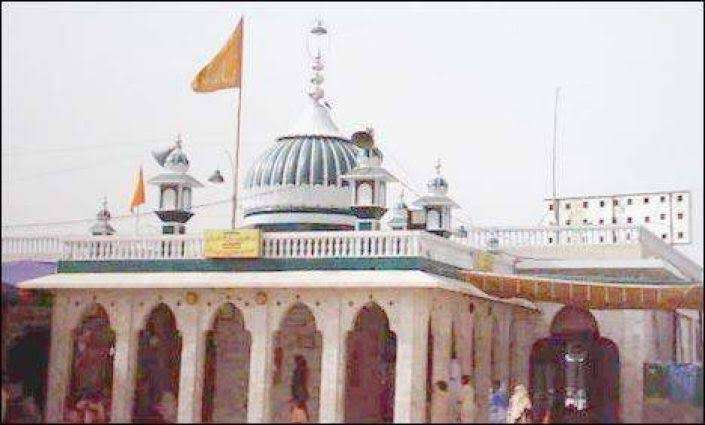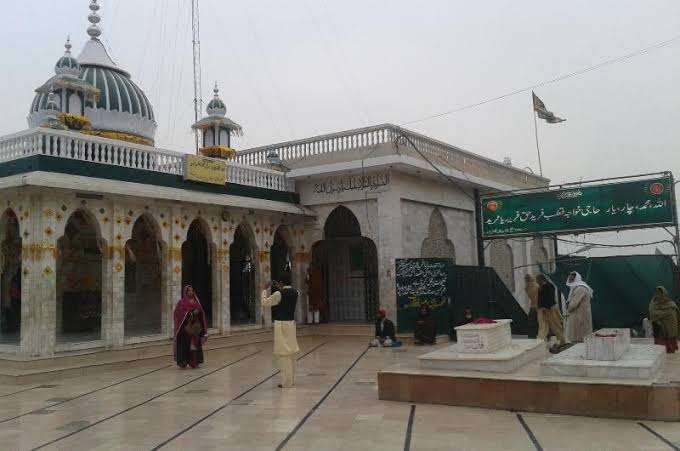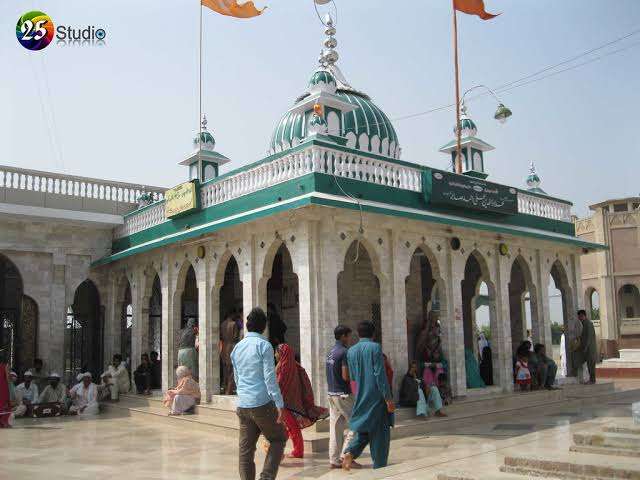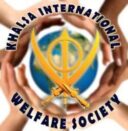Gurudwara Janam Asthan Sri Guru Nank Dev Ji
The settlement was established by the Hindu Rai Bhoi, hence the name Rai-Bhoi-Di-Talwandi. After the birth of Guru Nanak, his great-grandson Rai Bular Bhatti dubbed it "Nankana Sahib." [Reference needed] The Gurdwara Nankana Sahib was refurbished by Gian-Punjab Maharaja Ranjit Singh in the years 1819 and 1820 CE. It was first built around 1600 CE. The Panjab, Jammu and Kashmir, Peshawar, Kangra, and Hazara Sikh Conference. [Reference needed] The Nankana massacre was caused by Narain Das, an Udasi mahant (clergy) of the gurdwara in Nankana Sahib, ordering his soldiers to open fire on Akali protesters on February 20, 1921, during the Akali movement. An uprising was started until the Sikhs regained control of the revered Janam Asthan Gurdwara after the firing received widespread condemnation.
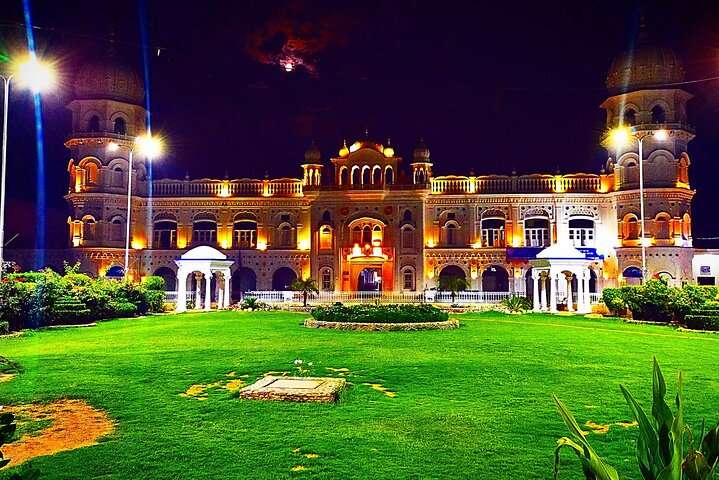
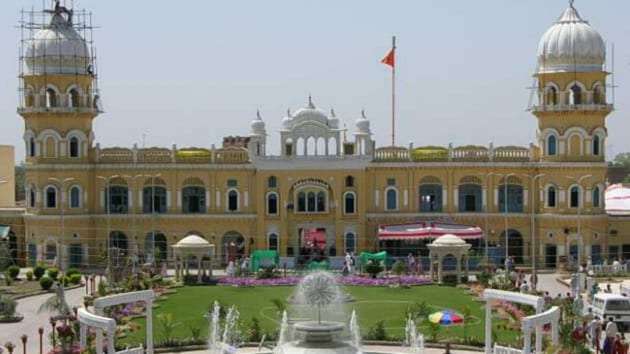
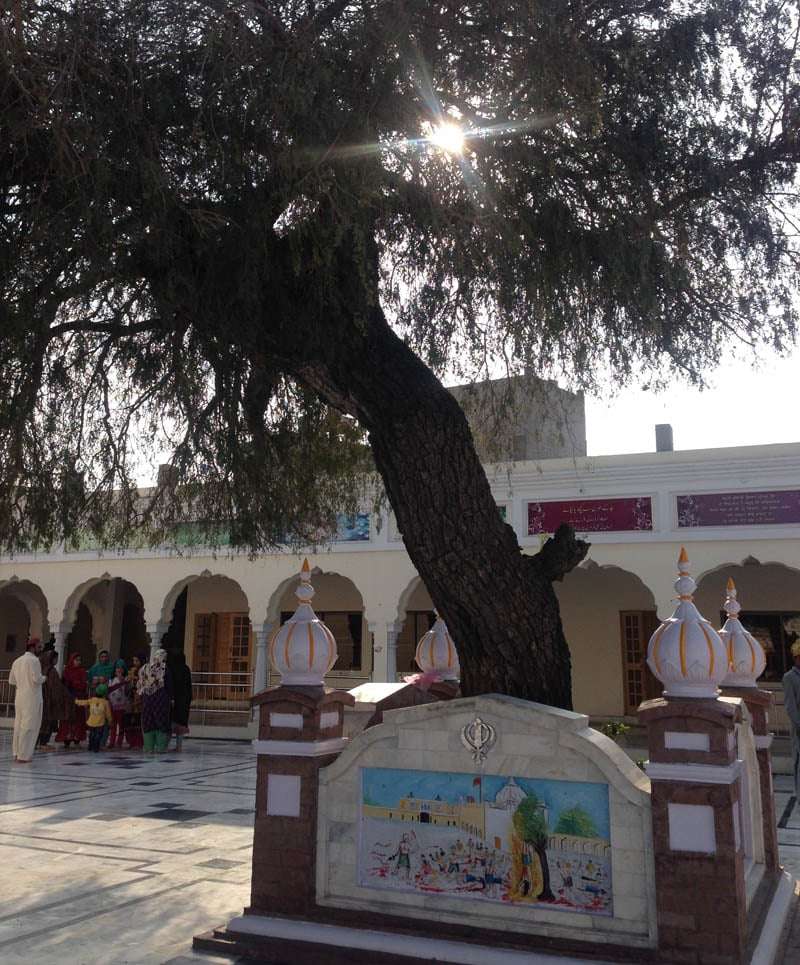
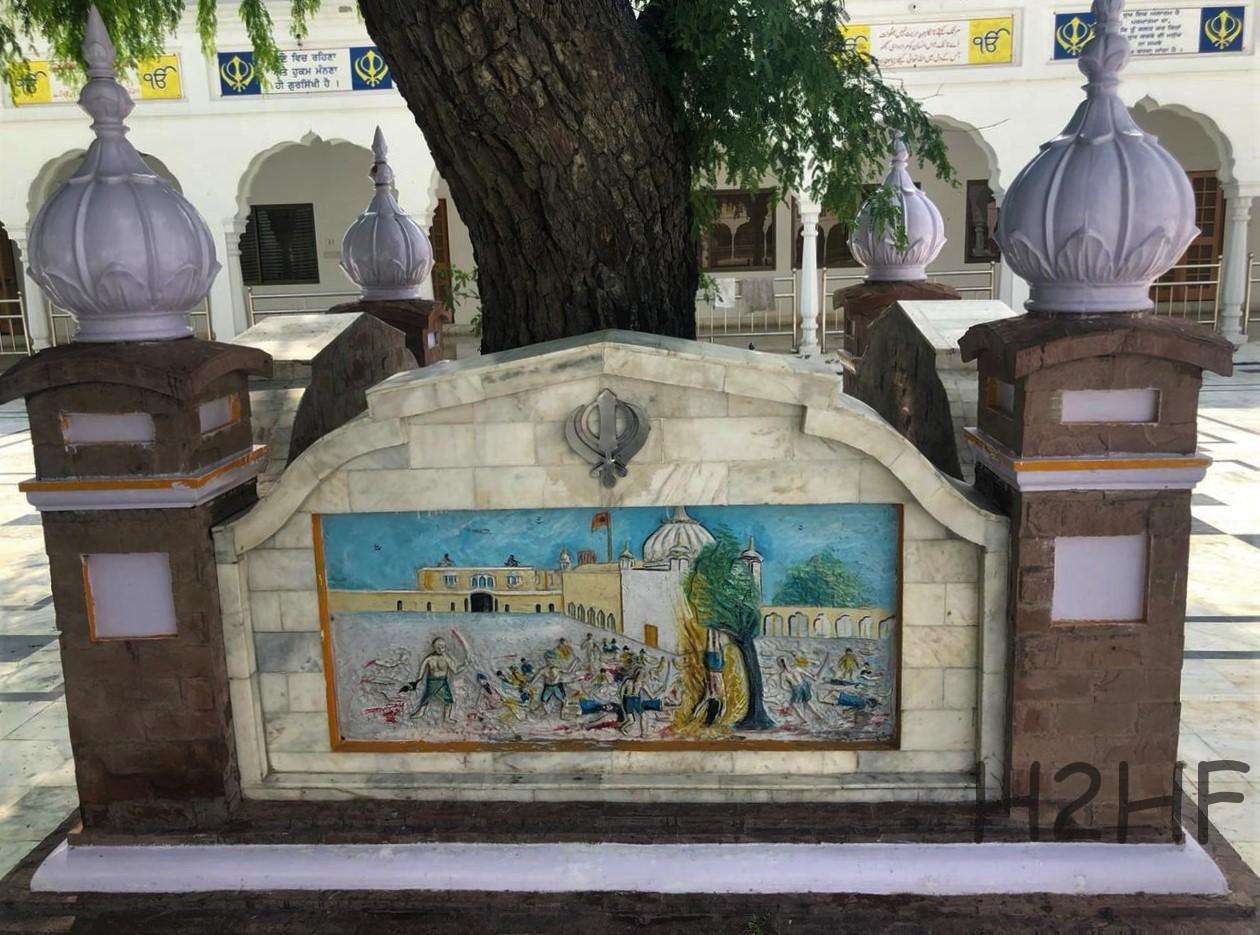
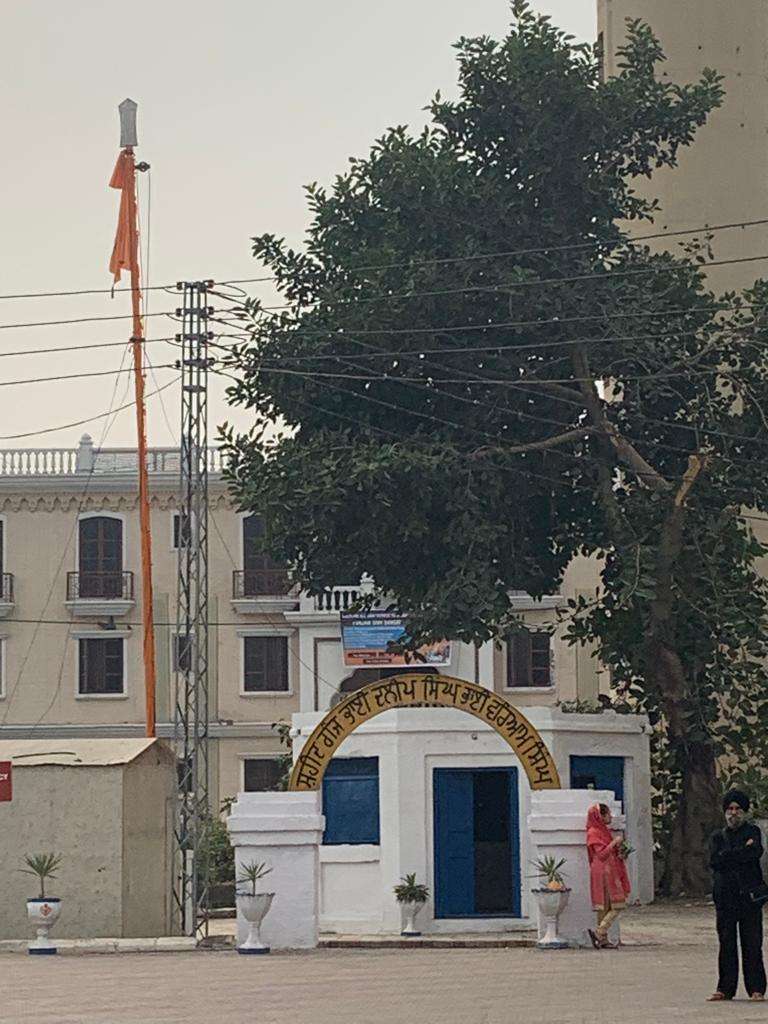
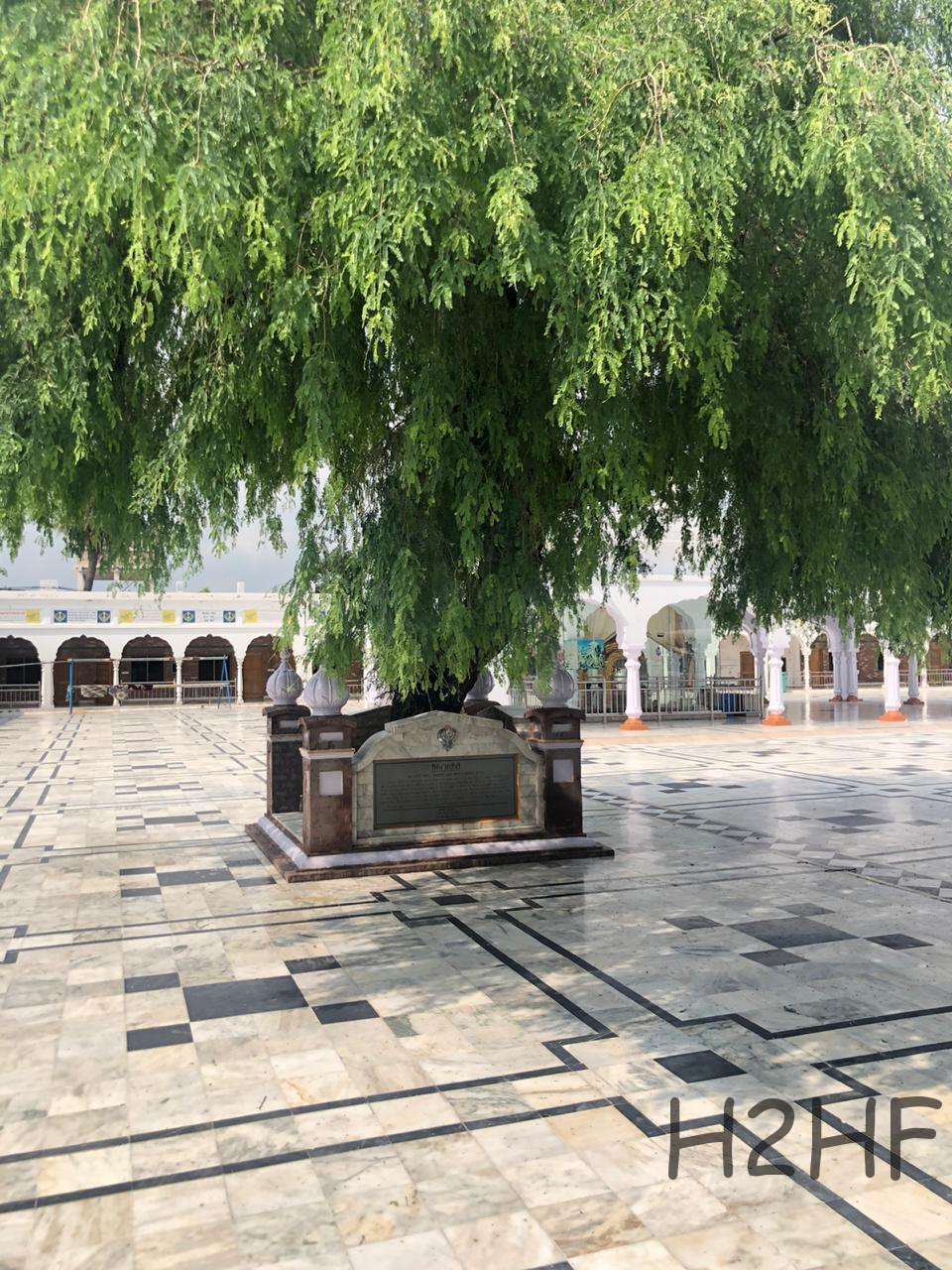
Shaheedi Saka Janam Asthan
The Nankana massacre (or Saka Nankana) in Nankana Sahib gurdwara on 20 February 1921, at that time a part of the British India but today in modern-day Pakistan. Between 140 and 260 Sikhs were killed, including children as young as seven, by the Udasi Custodian Mahant Narayan Das and his mercenaries, in retaliation for a confrontation between him and members of the reformist Akali movement who accused him of both corruption and sexual impropriety.The event forms an important part of Sikh history. In political significance, it comes next only to Jallianwala Bagh massacre of April 1919. The saga constitutes the core of the Gurdwara Reform Movement started by the Sikhs in early twentieth century. Bhai Lachhman Singh Dharowali who was wounded with a gunshot was tied to a Jand tree and burnt alive. The news spread and Sikhs from all parts of Punjab started their march towards Nankana Sahib. Bhai Kartar Singh Jhabber reached next day with 2200 Singhs armed with shastras (arms). Fearing more trouble, Mr King, Commissioner Lahore, handed over the keys of Nankana Sahib to Shiromani Committee and arrested Mahant Narayan Das and his Pashtun mercenaries and charged them with murder, but only Das and some of the mercenaries were sentenced to death.
Gurudwara Patti Sahib
Gurdwara Patti Sahib also called Gurdwara Maulvi Patti Likhi (‘Patti’ means a wooden board on which children learn to write alphabets with a pen made of a soft stem. The board could be washed after the lesson and would be given another coating of soft light clay and is re-used) is located at the site where young Guru Nanak learned the various different languages mainly Persian and Arabic which were then used in the Punjab, each with its own distinct alphabet. This sacred shrine lies midway between Gurdwara Janam Asthan and Gurdwara Bal Lilah along the road leading from Janam Asthan to the railway station in Nankana Sahib. The city has been renamed after its most famous native son Guru Nanak. Once known as the village of Talwandi the town is located in West Punjab, Pakistan.
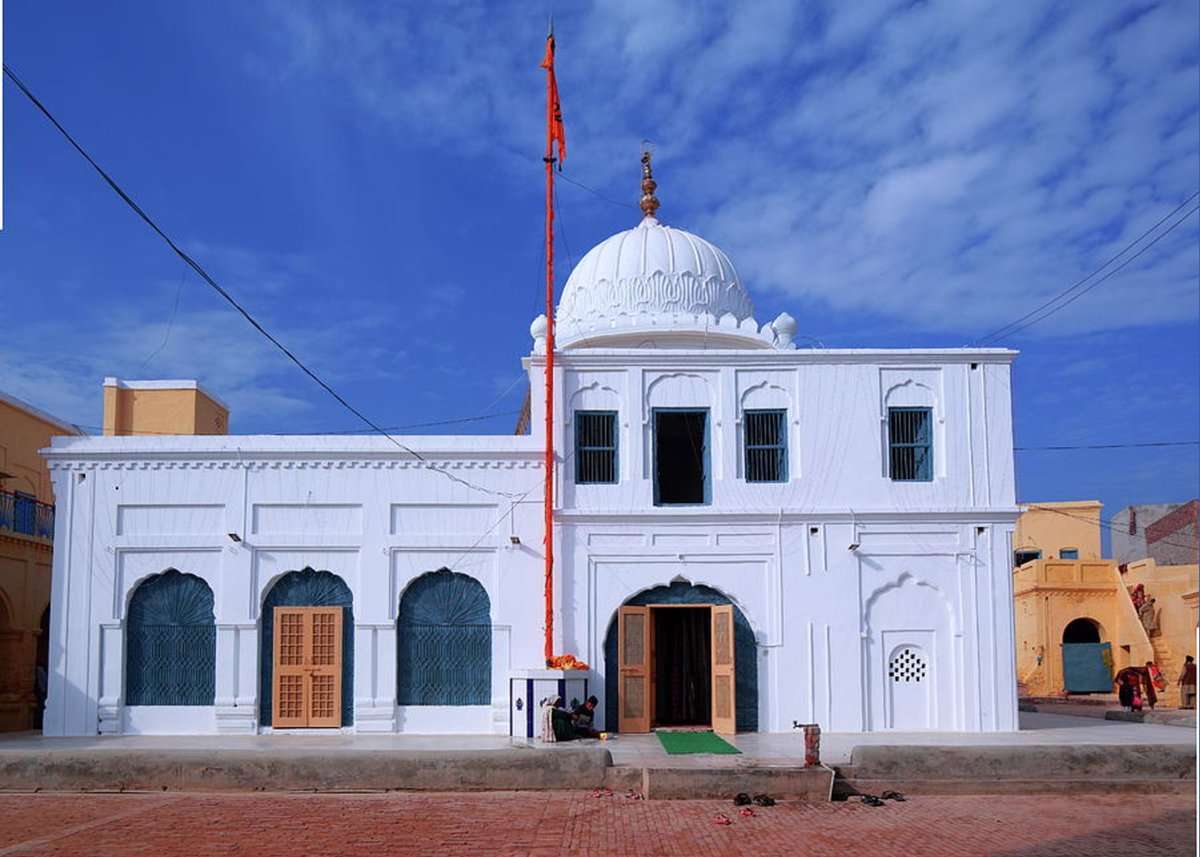
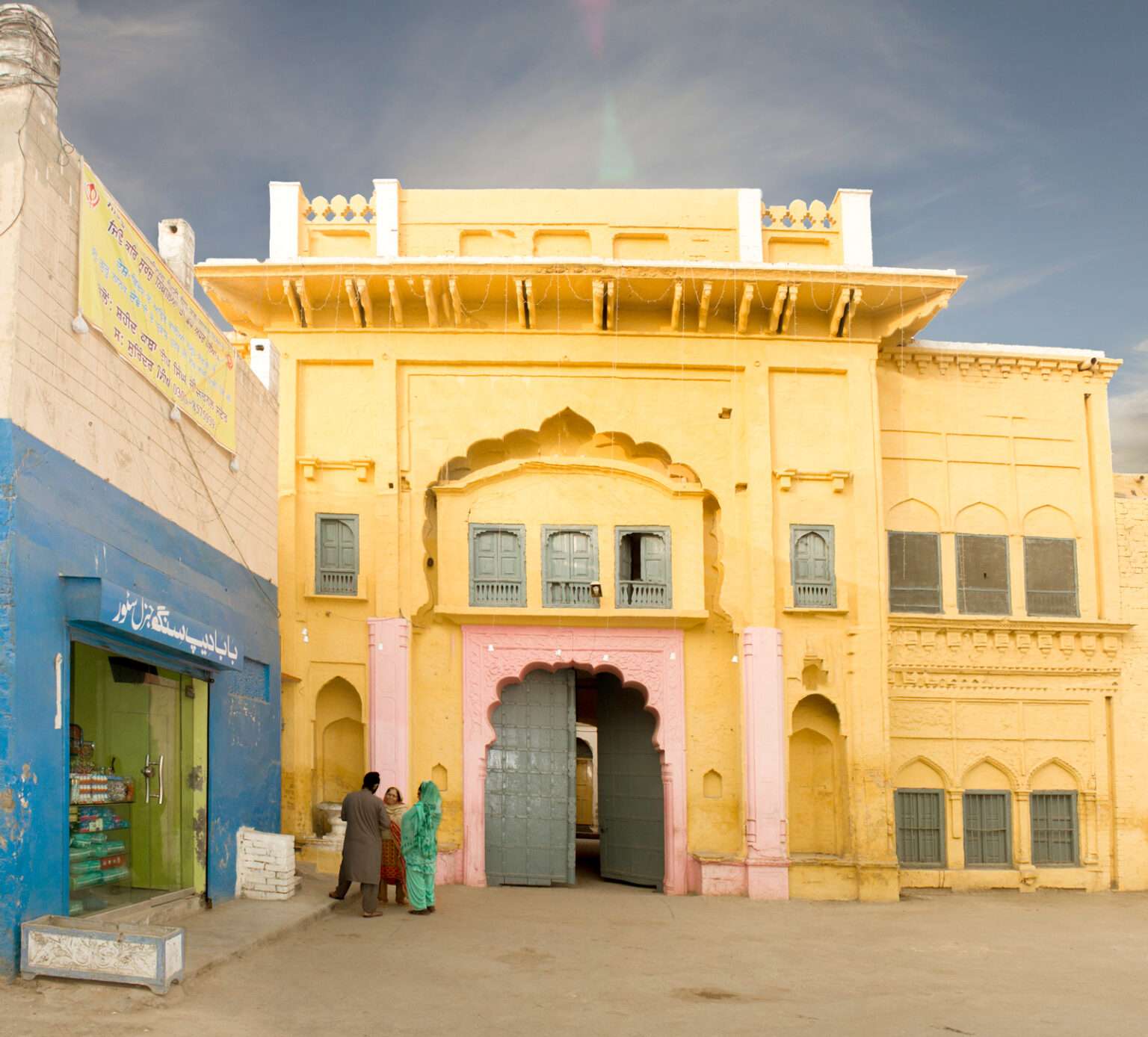
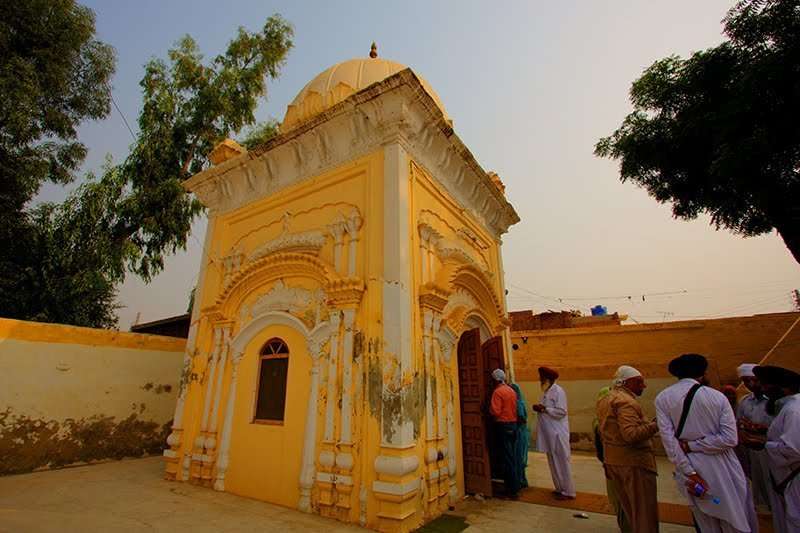
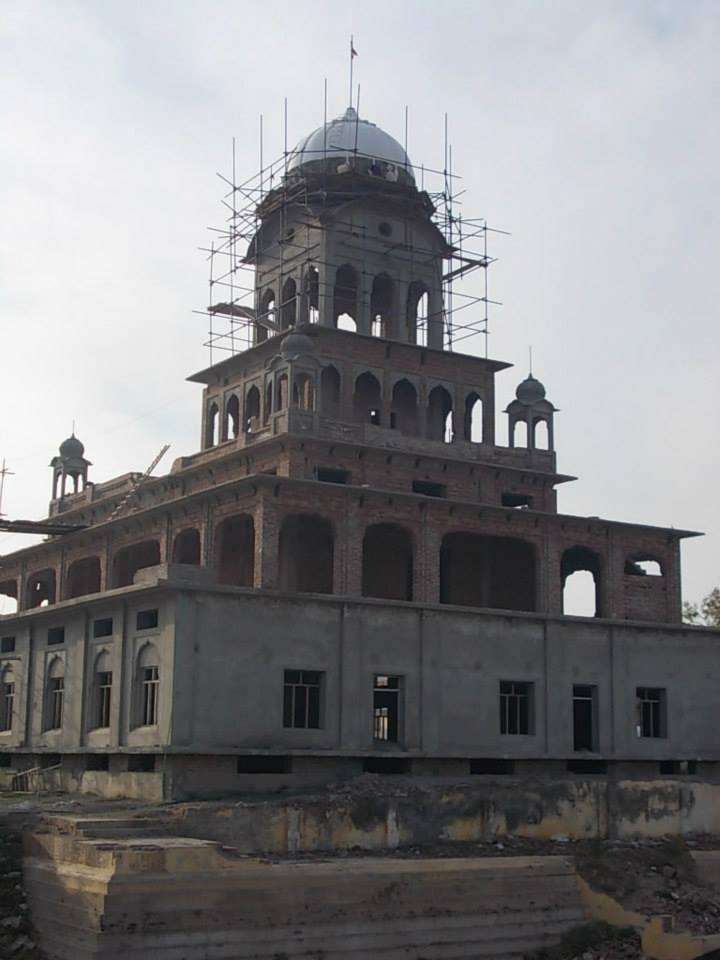
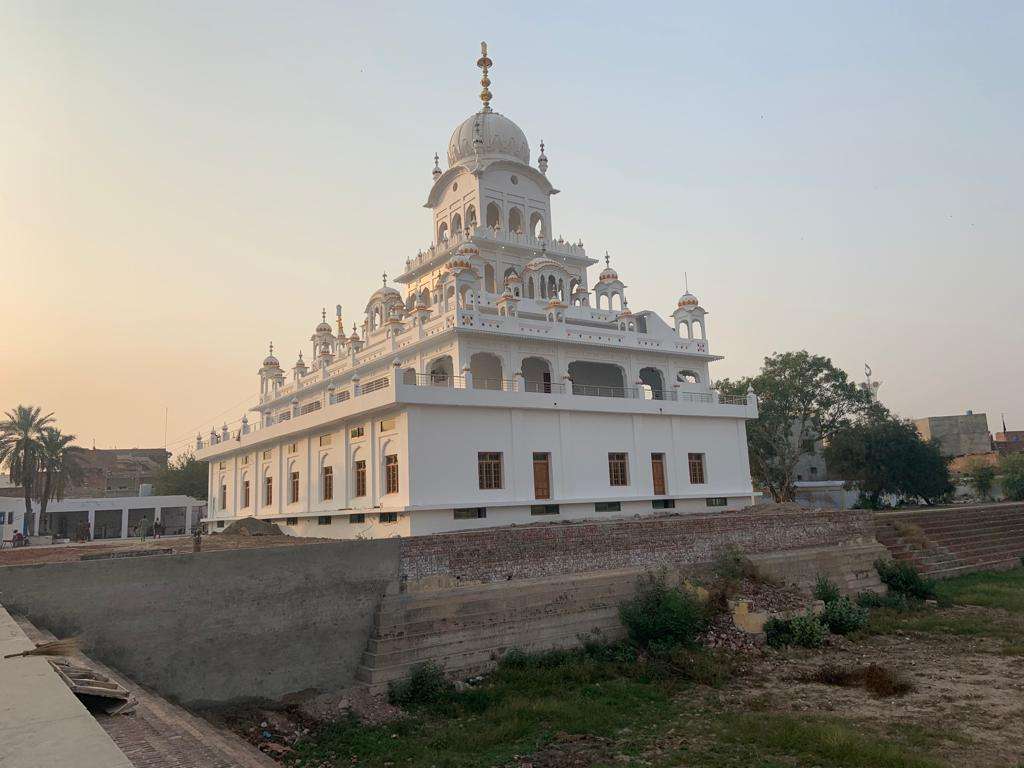
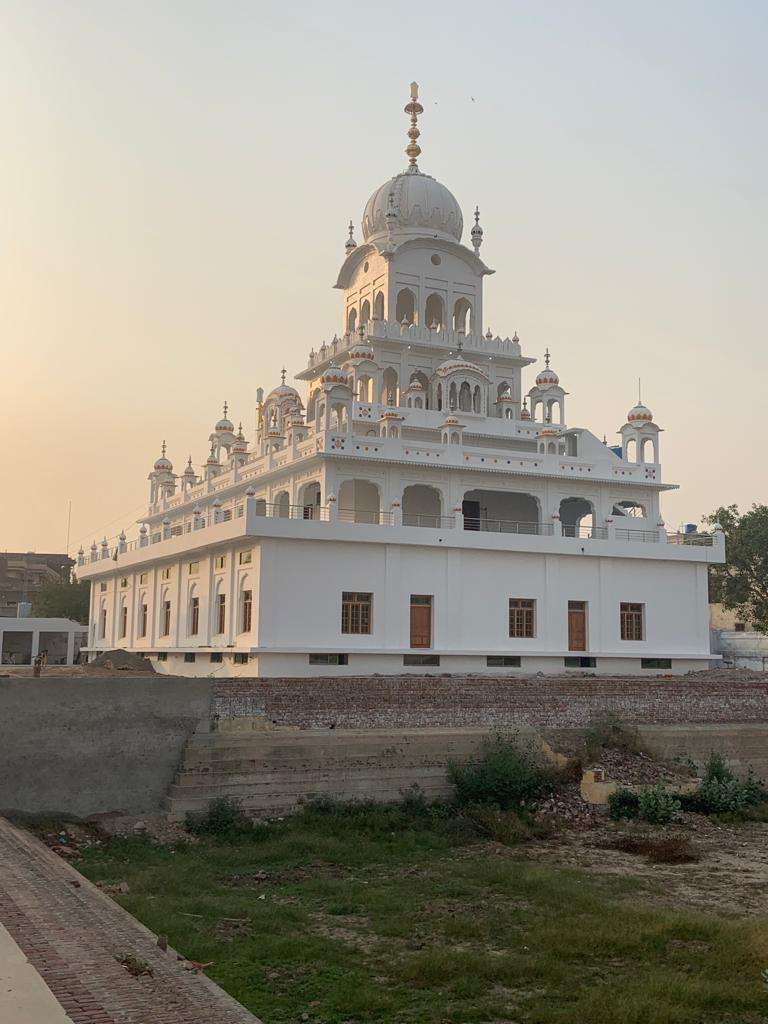
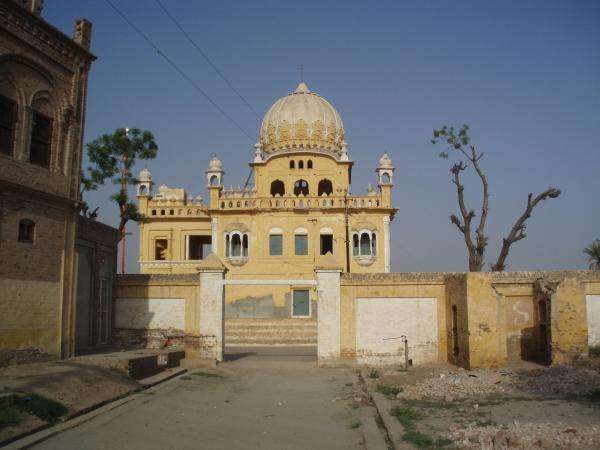
Gurudwara Bal Lilla
During the early 1800s, Maharaja Ranjit Singh had the building renovated and the tank enlarged and properly lined. Of the land donated by him, about 3,000 acres were allotted to Gurdwara Bal Lila. After the 1921 tragedy at Gurdwara Janam Asthan, the custodian mahants of this shrine voluntarily handed it over to the Shiromani Gurdwara Parbandhak Committee in exchange for suitable maintenance allowance for their families. Before the Saka of 1921, the arrangement of this Gurdwara was in the hands of the Nirmala Singhs. Besides Tirath Singh, the Mahant there were also 37 other patidaars. The Gurdwara came under the panthic management at the time of the Gurdwara Sudhar Movement. This Gurdwara remained in the panthic hands up to 1947, but after the partition, the Pakistan Waqf Board has been serving the Gurdwara.
Gurdwara Tambu Sahab
Gurdwara Sri Nankana Sahib, also known as Gurdwara Janam Asthan, is the Gurdwara representing the home of Mehta Kalyan Das (also known as Metha Kalu) and Mata Tripta, who were the parents of Guru Nanak. This was where Guru Nanak was born. A room was first built here by Guru Nanak's son, Baba Lakhmi Das, but it was more probably constructed by Guru Nanak's grandson, Baba Dharam Chand (1523-1618). The one room structure was known as 'Kalu ka Kotha', literally 'house of (Mehta) Kalu'. Later it came to be known as 'Nanakayan', literally 'home of (Guru) Nanak'. The Gurdwara was established before the end of the 16th century because Guru Arjan(1563-1606) is believed to have visited it.
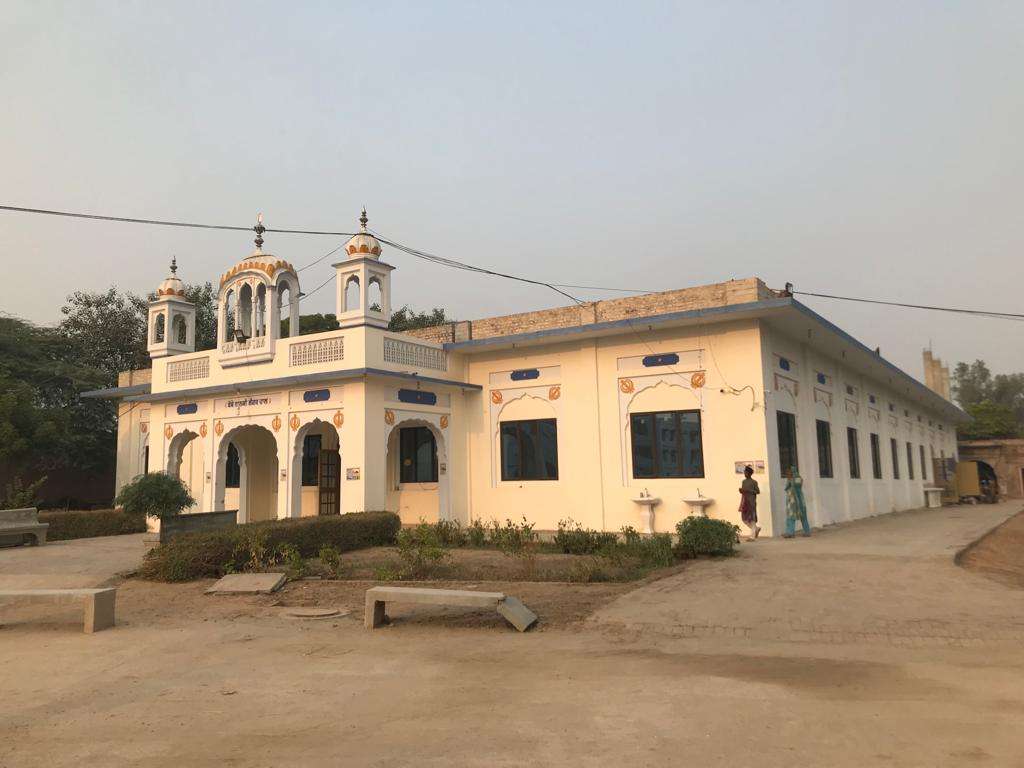
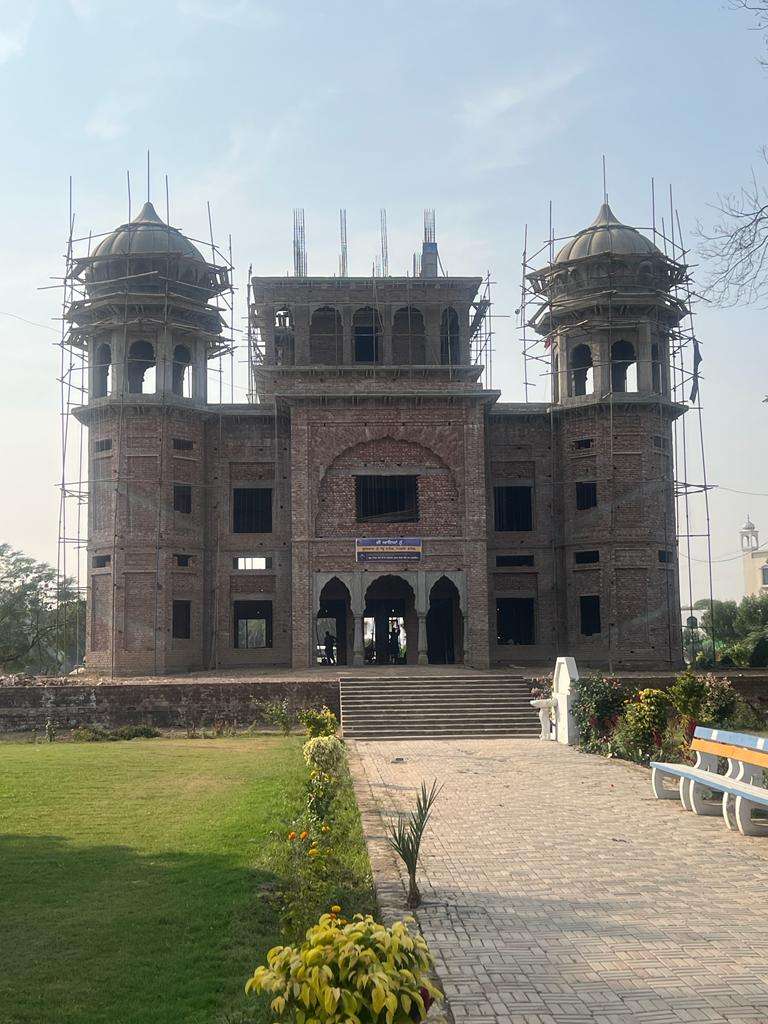
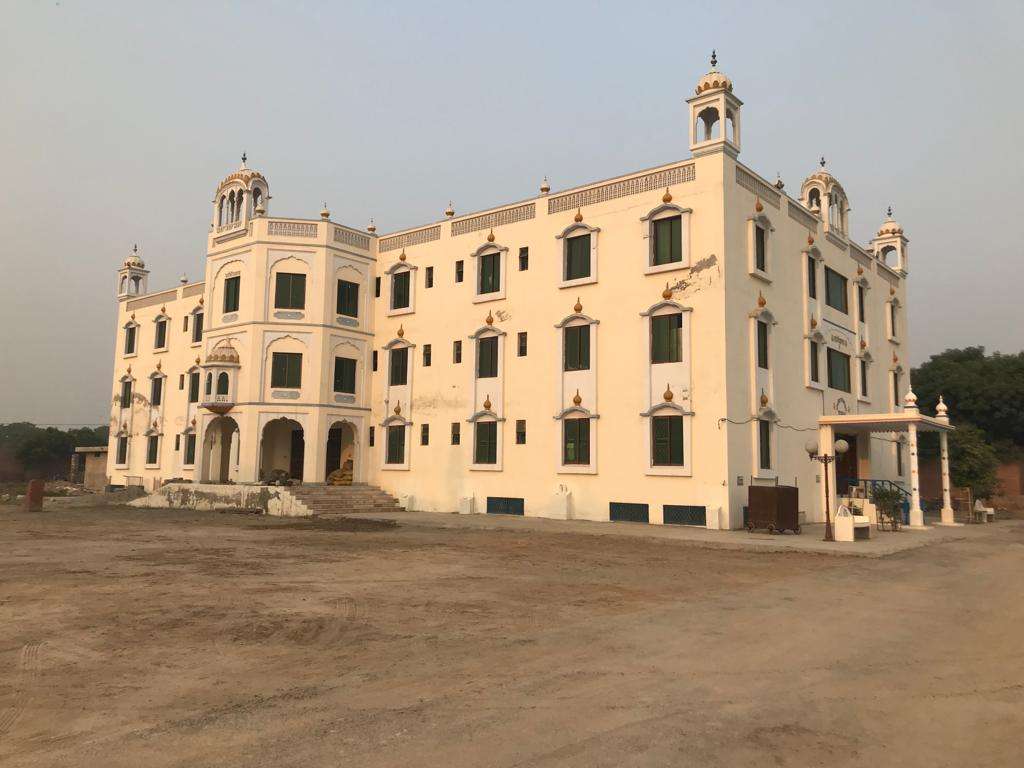
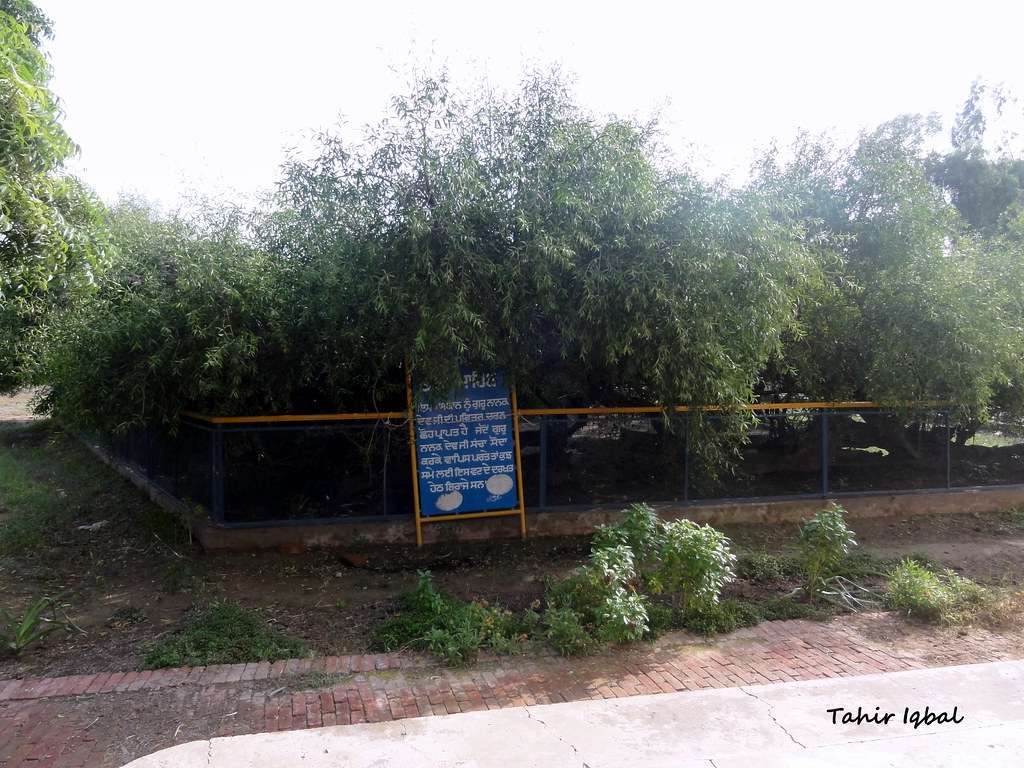
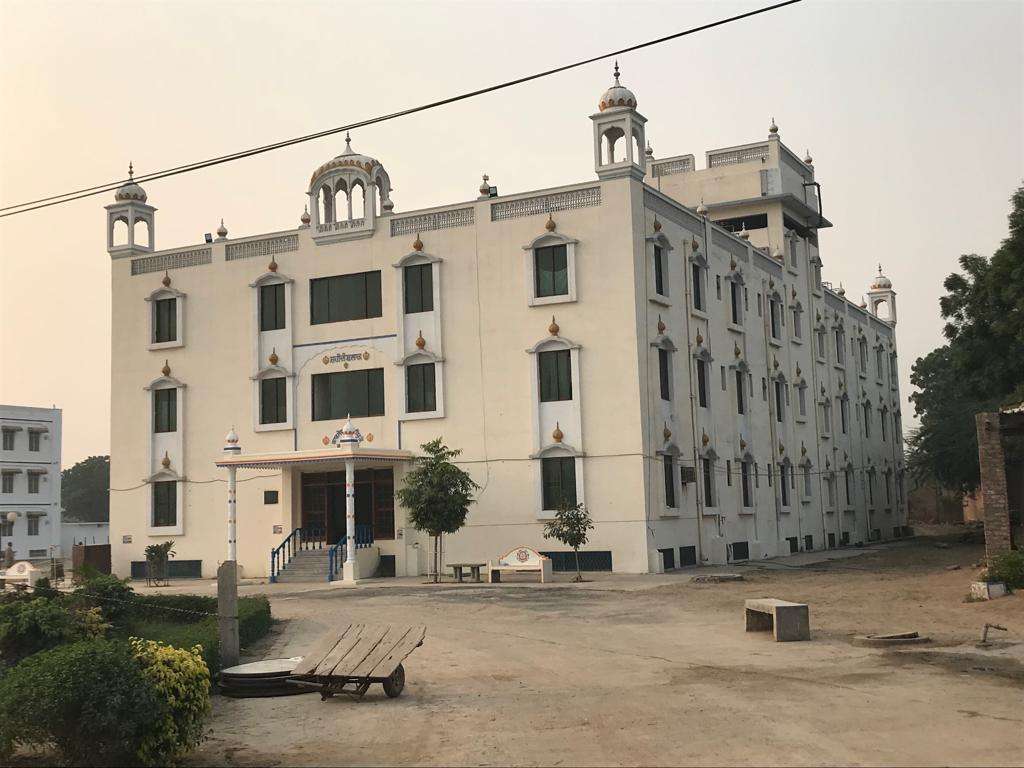
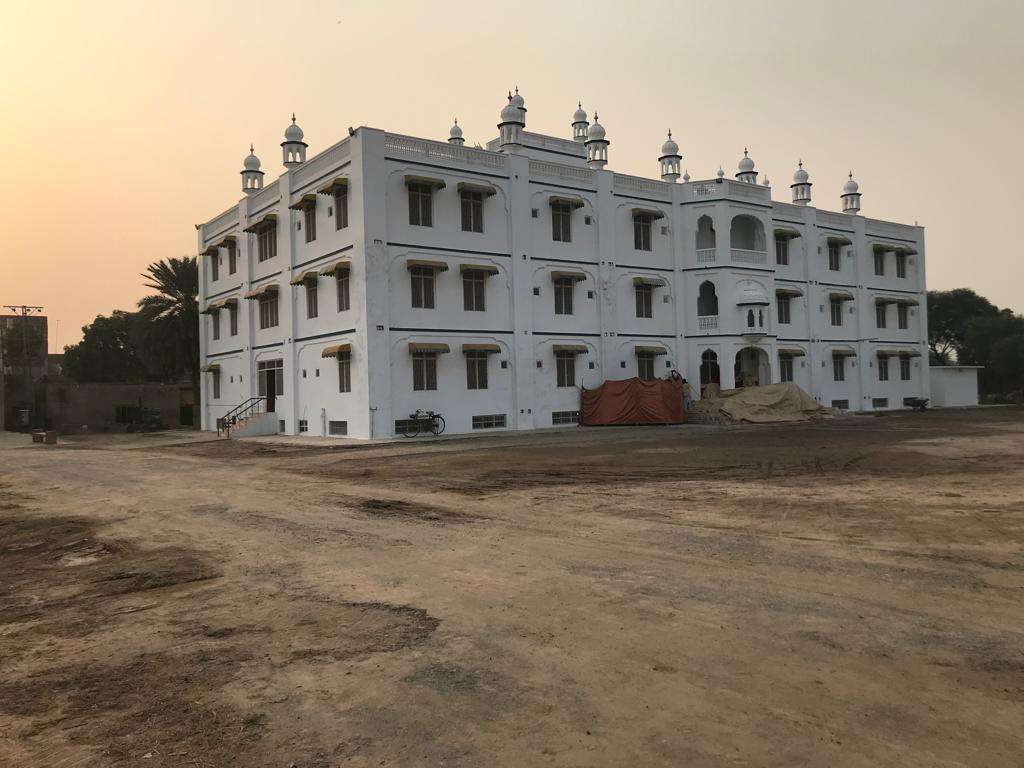
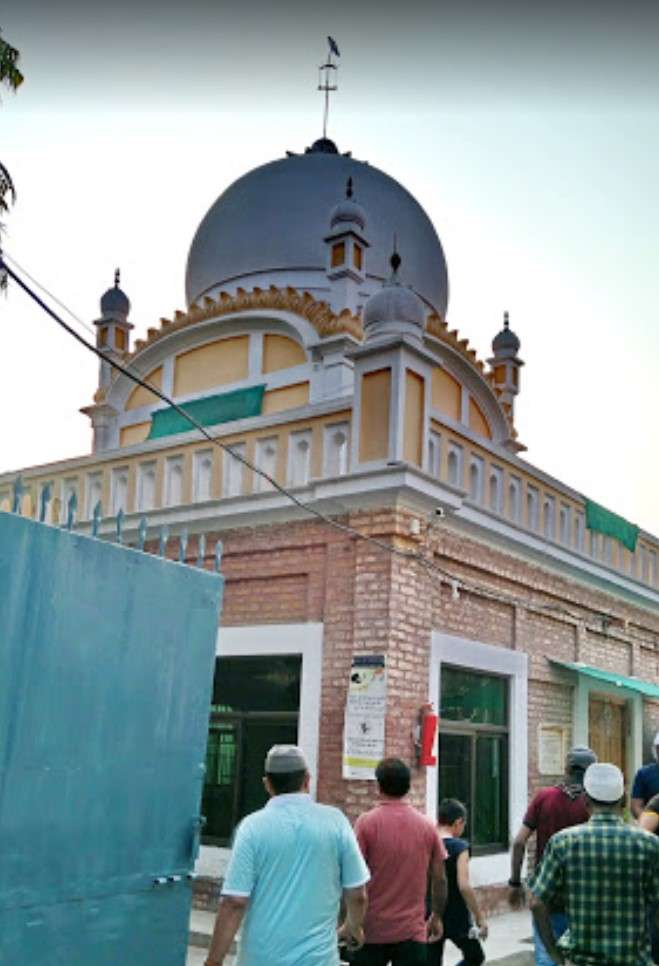
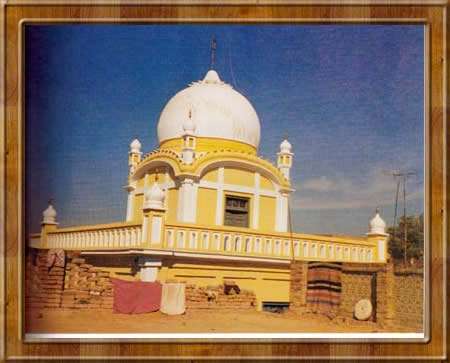
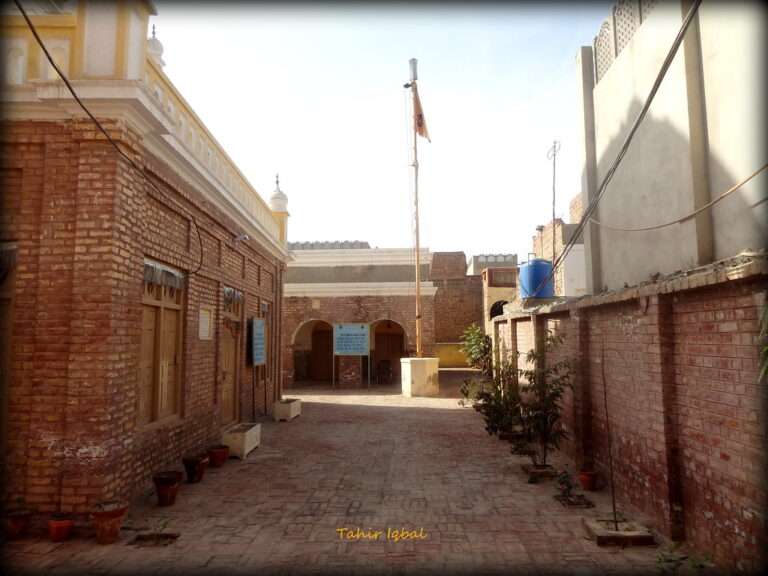
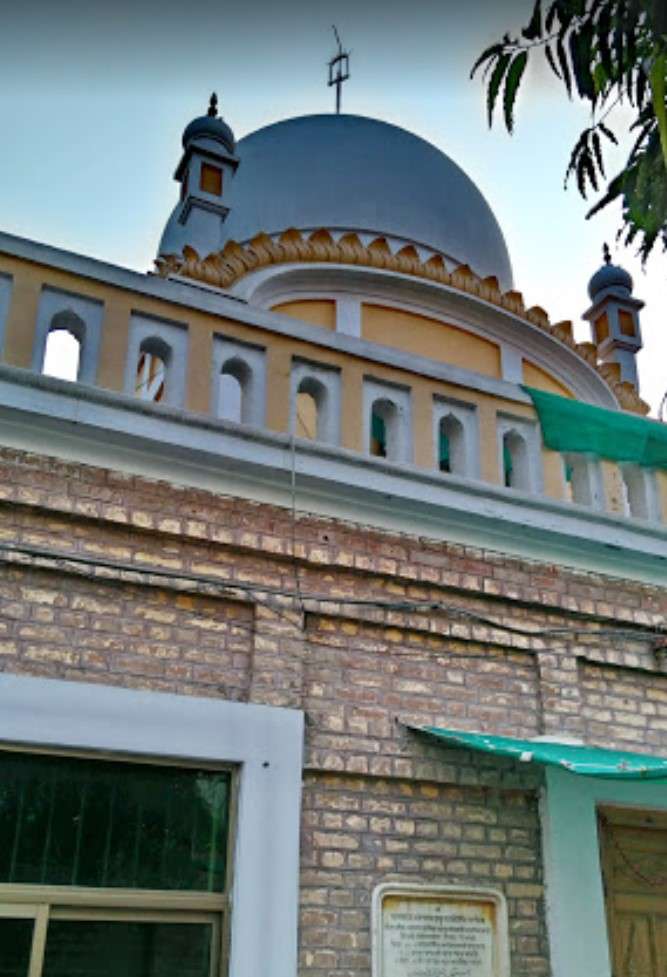

Gurudwara Panjvin and Chhevin Patshahi
The Nankana massacre (or Saka Nankana) in Nankana Sahib gurdwara on 20 February 1921, at that time a part of the British India but today in modern-day Pakistan. Between 140 and 260 Sikhs were killed, including children as young as seven, by the Udasi Custodian Mahant Narayan Das and his mercenaries, in retaliation for a confrontation between him and members of the reformist Akali movement who accused him of both corruption and sexual impropriety.
Gurudwara Sri Kiara Sahib
Gurudwara Kiara Sahib is situated at a distance of one and a half kilometres from Gurdwara Janam Asthan. According to Janam Sakhi, when Guru Nanak was yet a young man, he was sent to graze cattle. While resting underneath a shady tree, Guru was immersed in thoughts and the cattle went astray in the fields of a farmer. On having seen this, the farmer got red with rage. The clamouring made by the peasent disturbed the young Nanak waking him from his trance. Recognizing the the son of the village's patwari, he made a complaint to Rai Bular who went with the farmer to see the damage. But on getting to the field that had been trampled everyone was surprised to fine no damage at all. The Guru drove the cattle towards his house. On his return, the Guru just had a kind look at the fields which turned green. By watching this miracle, the Hindus and the Muslims revered the Guru. This Gurdwara is situated in that historical field. The building is large. A boundary wall and a sarovar has been built around the whole field. Before obtaining the management of this Gurdwara by the panth in February 1921, a trio consisting of Mahant Fauja Singh, Mahant Ujjagar Singh and Mahantani Inder Kaur, was managing the affairs of this Gurdwara. After the partition of 1947, This Gurdwara came under the Pakistan Waqf Board. The holy tank is dry and Sri Guru Granth Sahib is not opened ceremoniously.
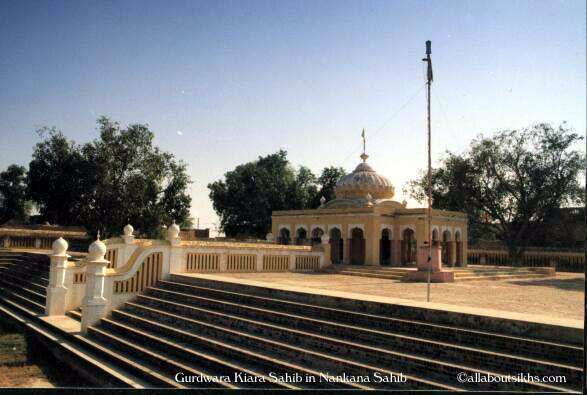
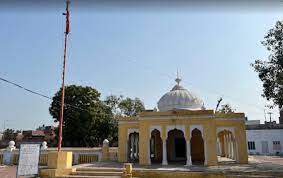
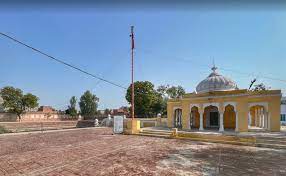
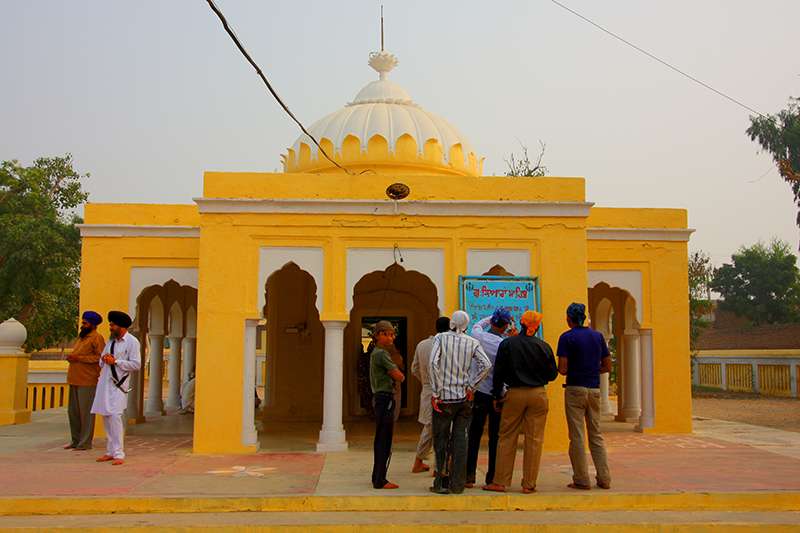
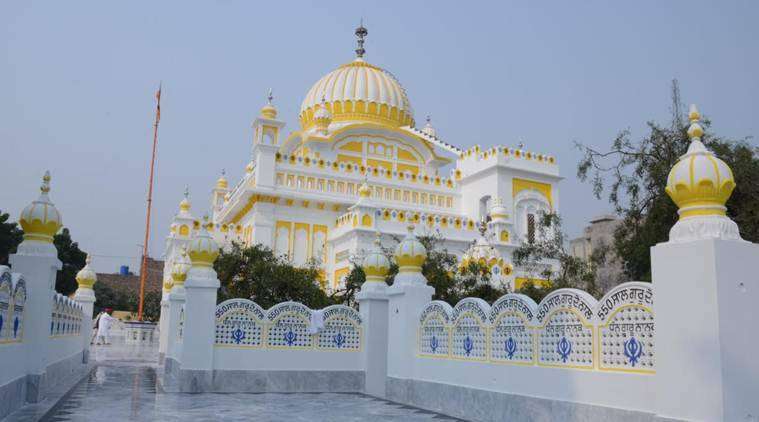
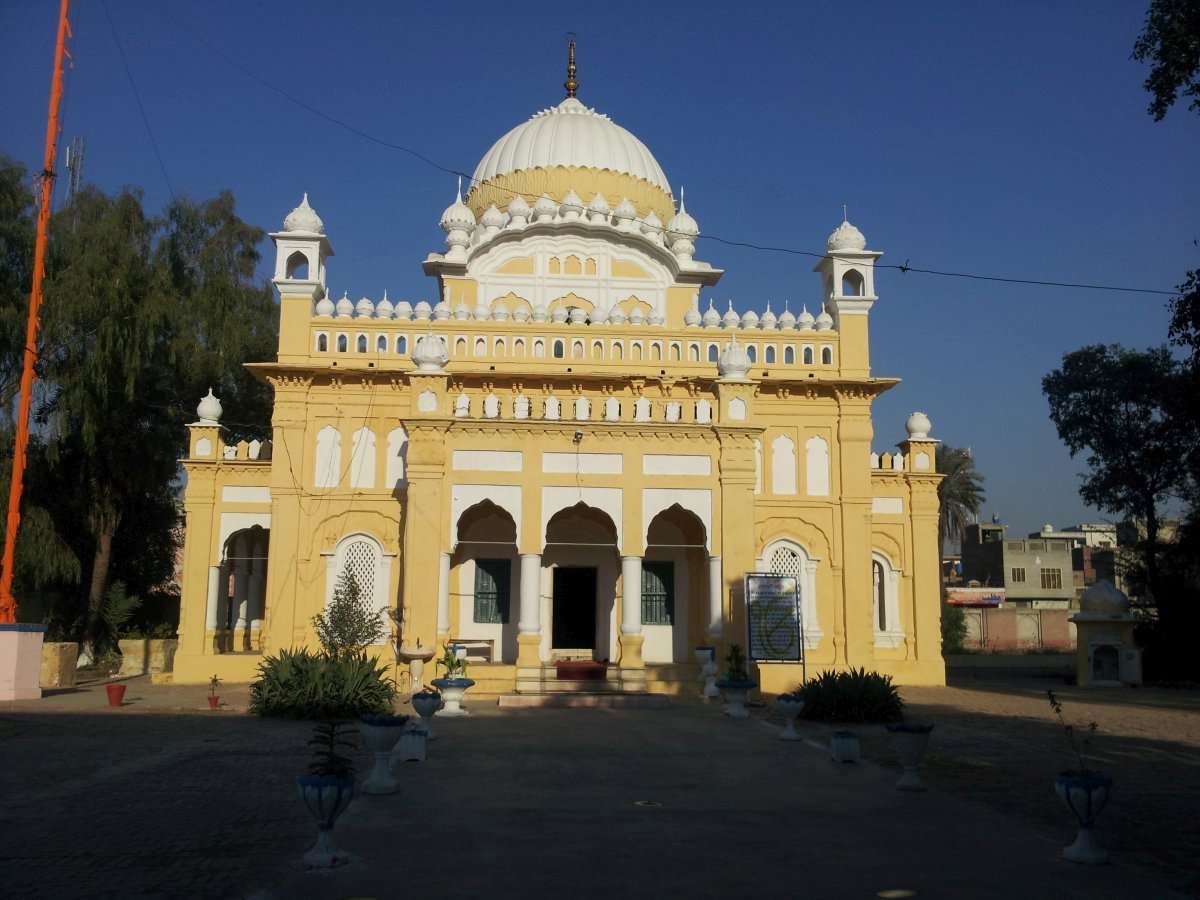
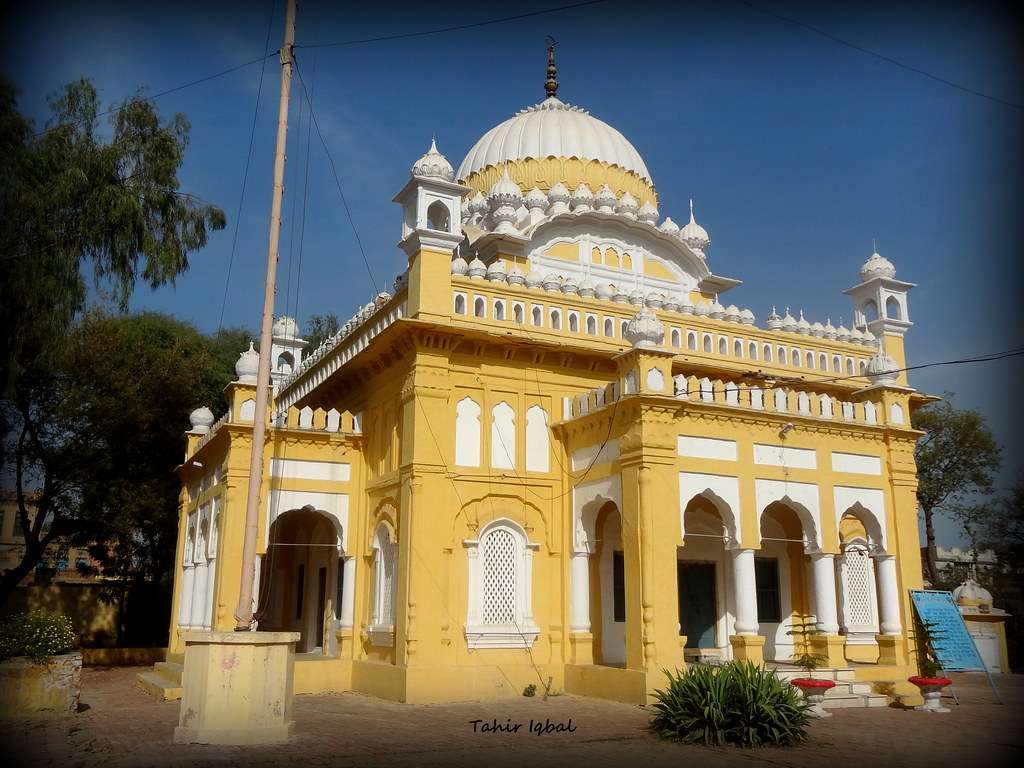
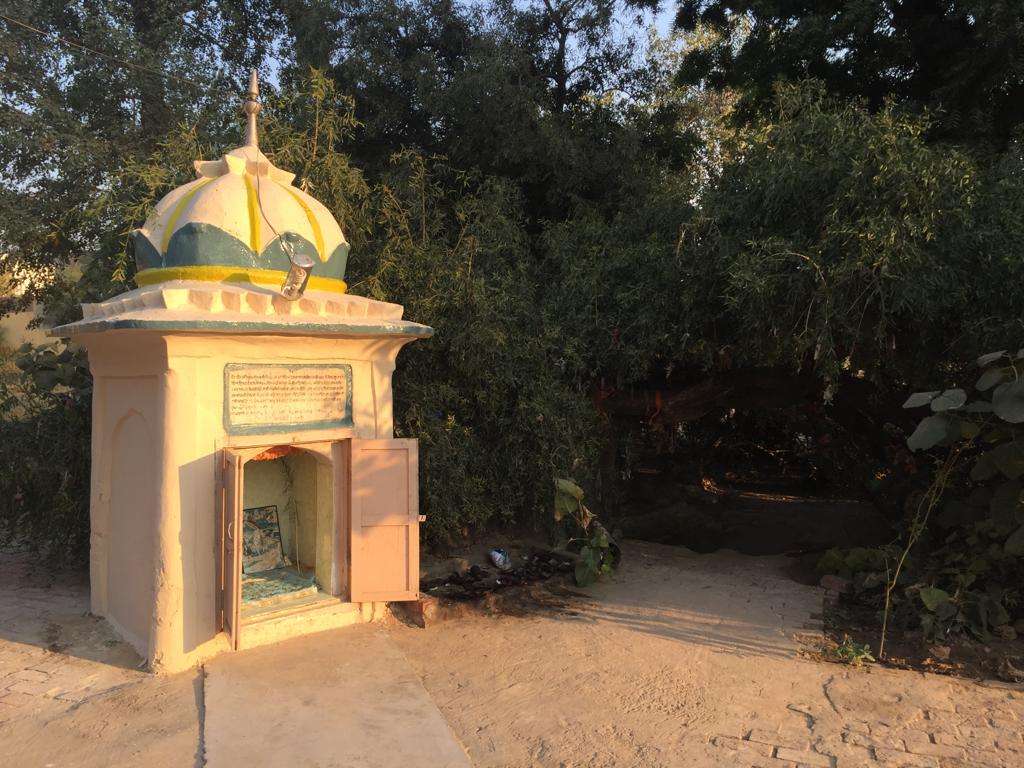
Gurudwara Mall Ji Sahib
This Gurudwara, too, was first built by Diwan Kaura Mal and renovated by Maharaja Ranjit Singh. It is larger and more imposing than Kiara Sahib with its broad copings mounted with domelets around the central dome, domed kiosks at the corners of the roof and porches on the sides of the hall.This place is presently situated amidst the thick population of Nanakana Sahib. After partition, unfortunately, Sri Guru Granth Sahib has not been ceremoniously opened. Anyhow a portrait of the Guru is placed at the sanctum sanctorum, where the pilgrims pay a visit.This holy place is associated with the childhood activities of Guru Nanak Dev ji. One day while grazing the cattle, the Guru was taking rest under a shady tree. He went into trance. When the shadows were falling down, his divinely face happened to be covered with the sunshine. A big cobra spread its hood on the very face of the Guru for relieving him from the scorching heat. Rai Bular, the hakam of Talwandi saw this from a far off place. He got the impression that the child Guru Nanak was bitten by the snake. On approaching the the place, where the Guru Nanak was lying, the snake snailed to its pit. The Guru was awakened by the Rai Bular and he found him quite safe and sound. The Rai Bular, thus came to realise the divine personality of the Guru and became his disciple from that very day. He made it clear to Mehta Kalu that he should not take the former as merely his son but a revered holy prophet. A grant building stands erected to day at this historical site.
Gurdwara Sacha Sauda
Gurdwara Sachcha Sauda is situated at a distance of 37 miles from Lahore on the Lahore-Lyallpur Railway Line. Guru Nanak as a young man was sent by his father Mehta Kalu, who was hoping to instill a sense of business in his son, to buy some goods which he cold return home with, then sell and make a profit. Sacchasauda.jpg At least that was Mehta Kalu's plan but along the way to his destination, the young Nanak came across some sadhus who were hungry and without food. The Guru to be decided to use the sum his father had given him (a sum of Rs. 20) with which to provide a meal, a langar for the Sadhus. Returning home without any purchases Mehta Kalu was very annoyed. But young Nanak explained to his father that as he saw it he had done a very good deed, feeding the starving Sadhus, and gaining the best profit one could gain from the money. It would not be the last time that Mehta Kalu would worry over his son
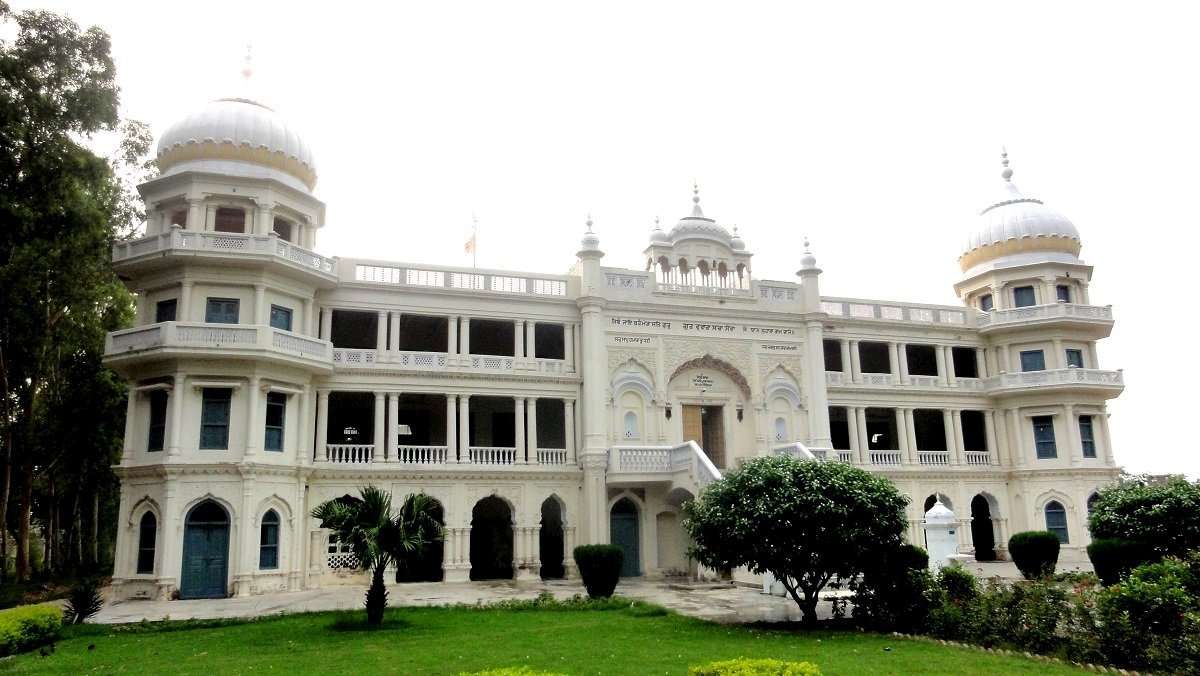
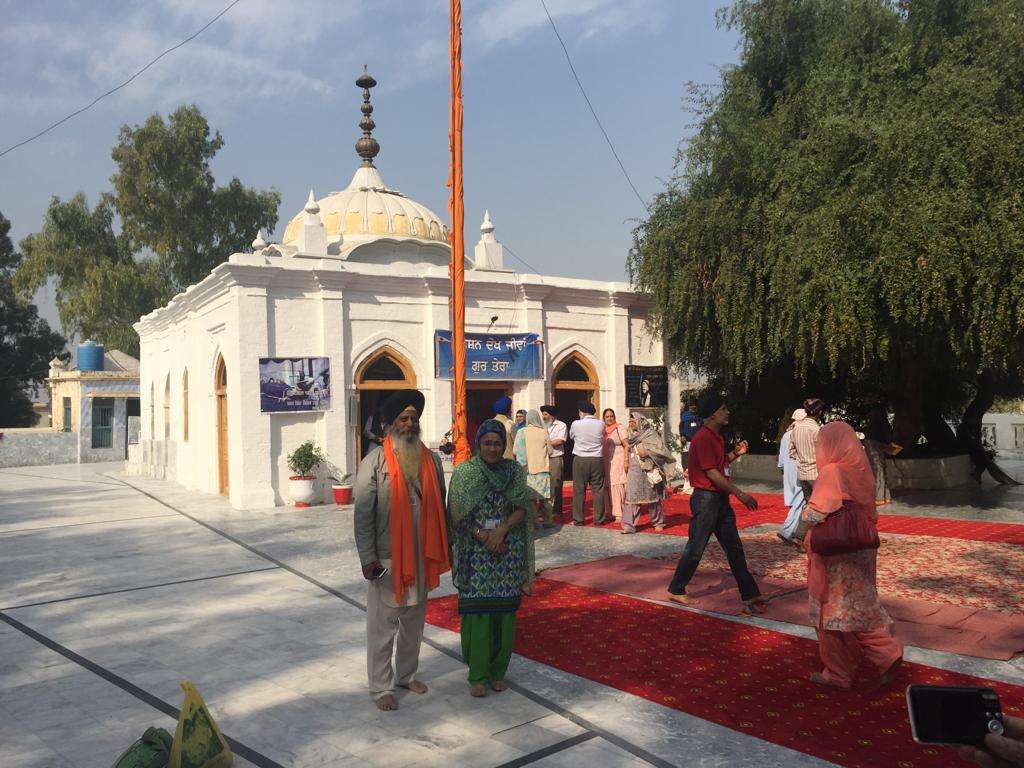
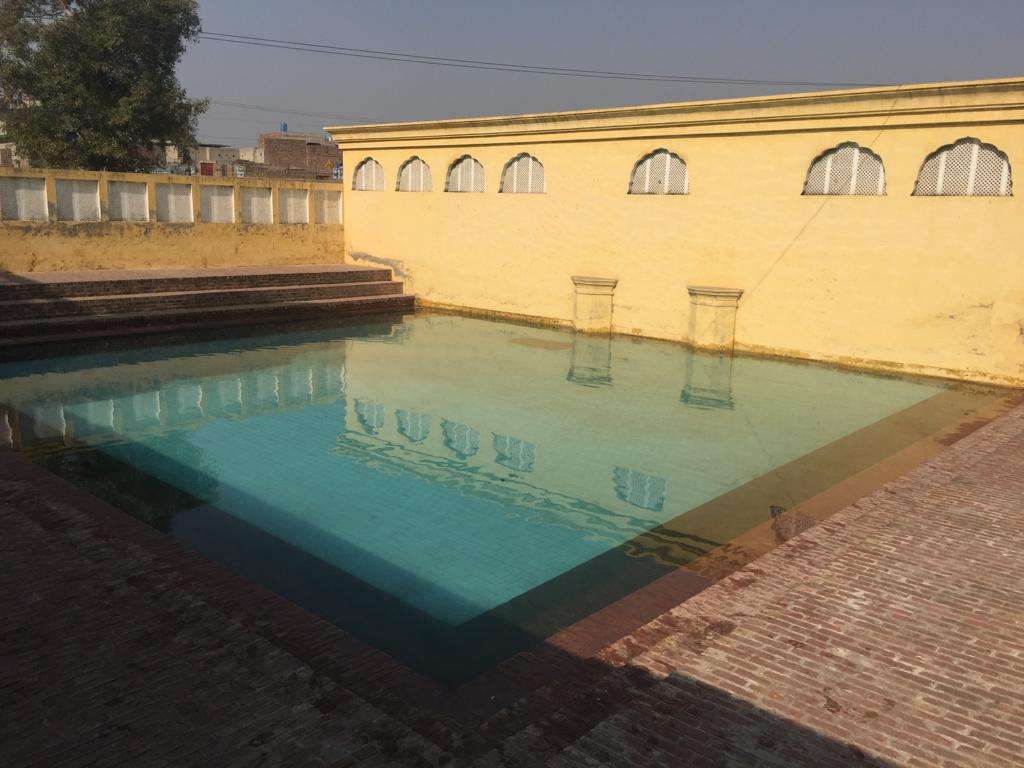
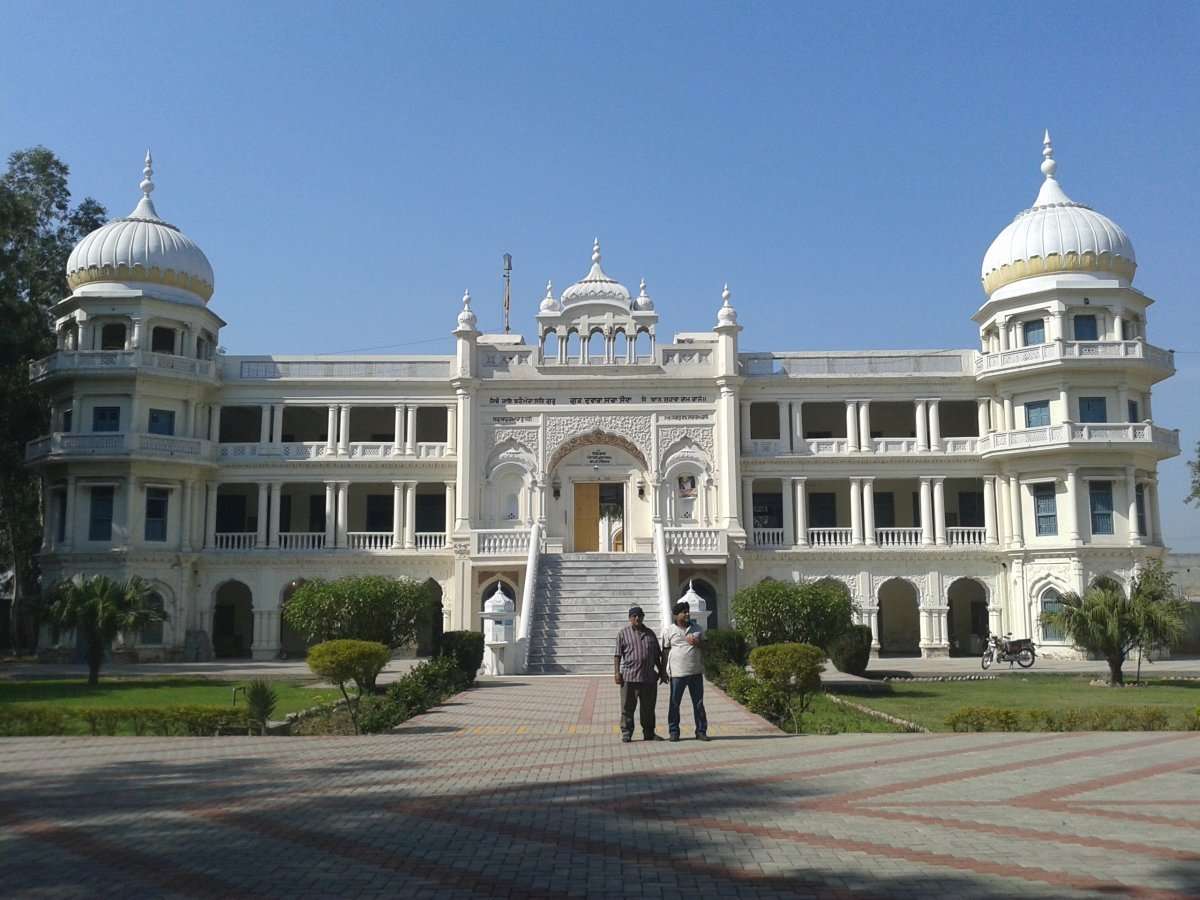
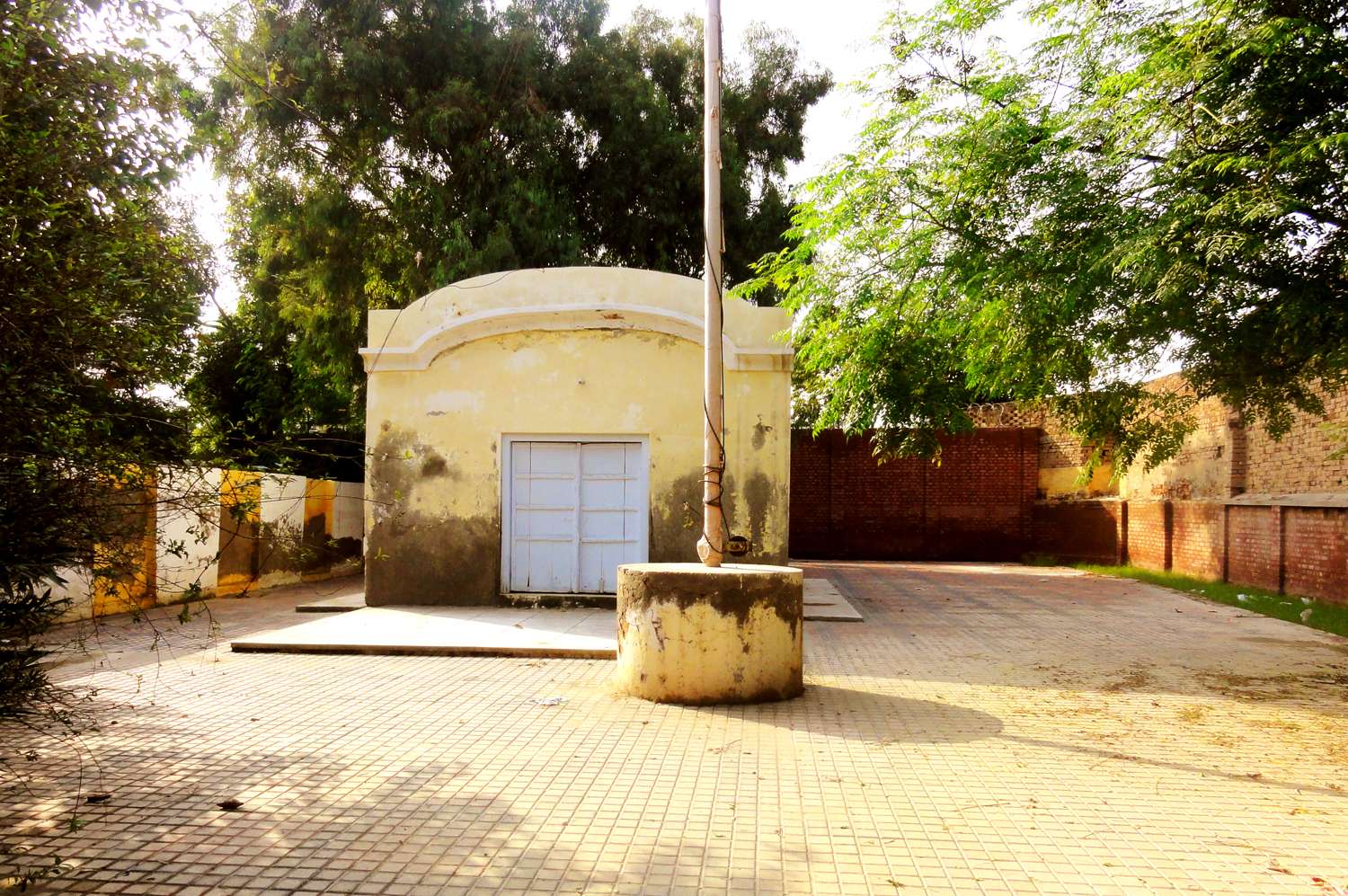
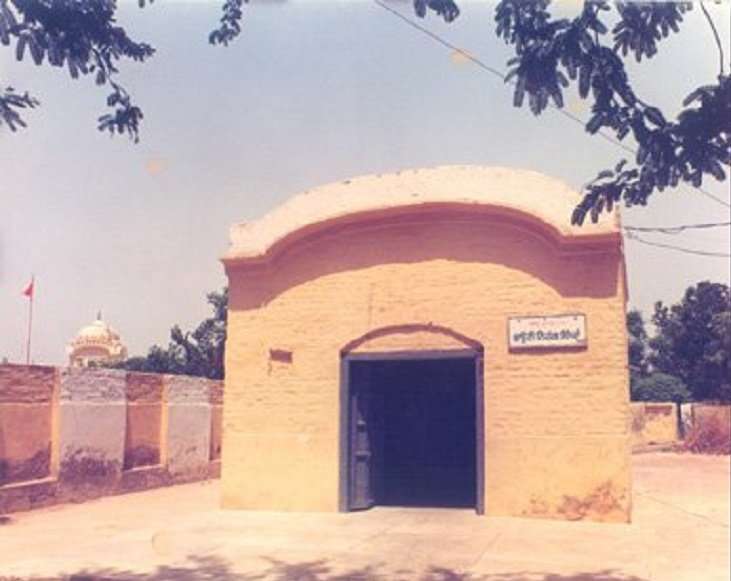
Gurdwara Nihang Singh
This Gurdwara is situated in between Gurdwara Sri Tambu Sahib and Gurdwara Sri Hargobind Sahib. Gurdwara Sri Tambu Sahib was under the control of Nihang Sikhs. Mahant Bhai Sharam Singh had taken over the task of serving Guru Granth Sahib at the behest of Gurdwara Parbandhak Committee whereas Nihang Ujagar Singh, opposed this and established a separate Prakashasthan near Gurdwara Sri Tambu Sahib. The Prakashasthan established by Nihang Sikh, known as Nihang Singh Chaoni (camp), became known as Gurdwara Nihang Singhan and is still standing beside the Gurdwara Sri Tambu Sahib. Prakash is not held on both the places now. No land endowment stands in the name of Gurdwara.
Gurudwara's In Lahore
Gurdwara Sri Dera Sahib Lahore
Guru Arjan was allowed to take a bath in the river Ravi, to cool his many burns, by his guards. At the time, the Ravi flowed along the wall of the fort. The Guru's light rejoined Akal Purakh on 30th May 1606. Sri Guru Hargobind Sahib Ji visited the site of his father's torture in 1619 where he had a memorial rostrum built to commemorate the martyrdom of Guru Arjan. Later Maharaja Ranjit Singh had a small but beautiful Gurdwara built here. As the Maharaja's Gurdwara had no congregational hall, one was attached to Gurdwara in 1909, after which daily congregations were regularly held. After that a sarai (rooms for visitors) and a marble gate was built along with a Nishan Sahib
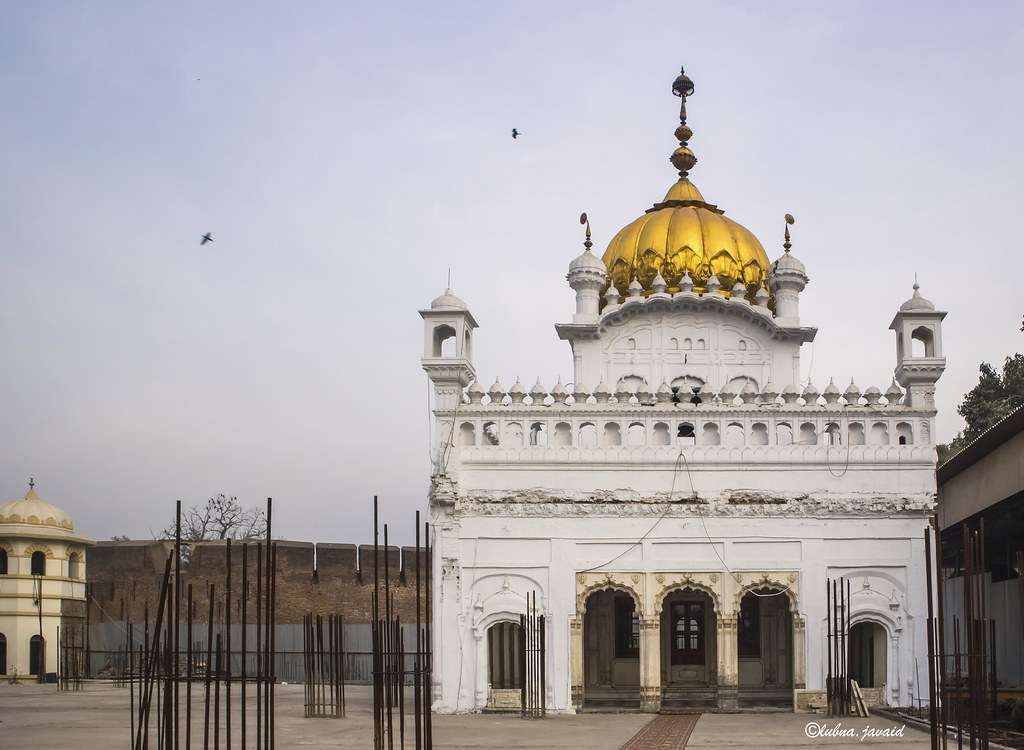

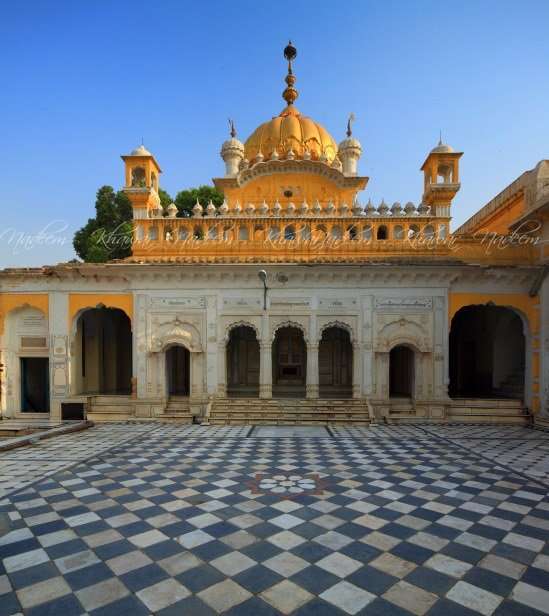

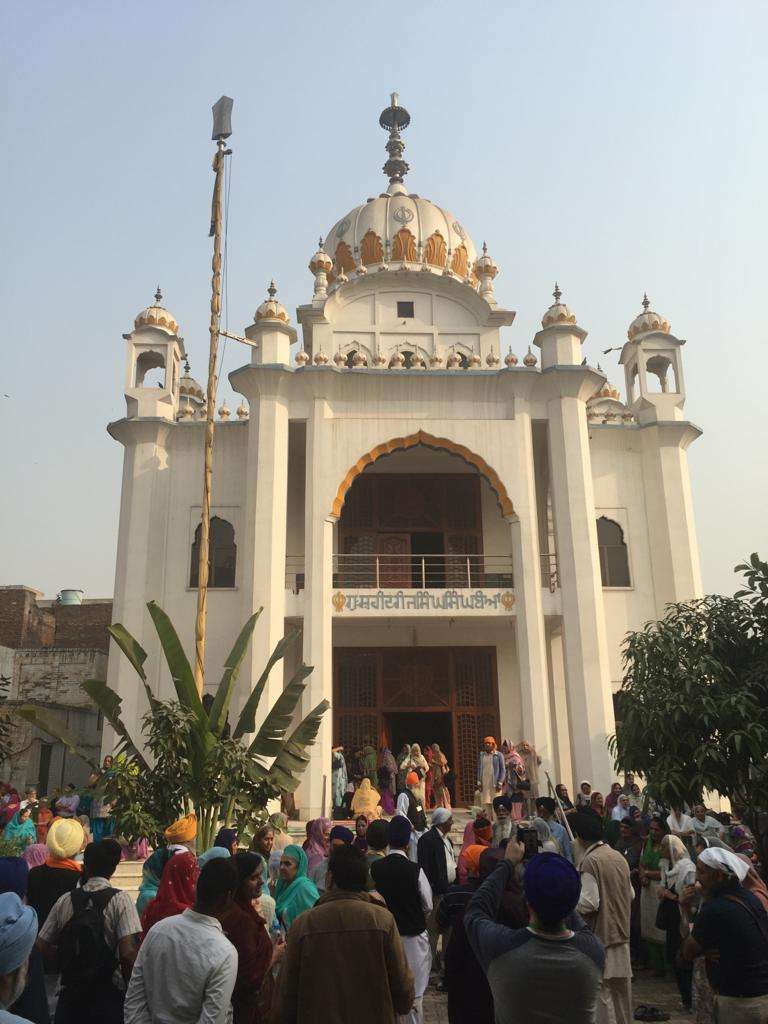
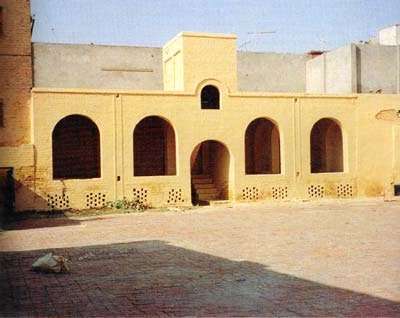
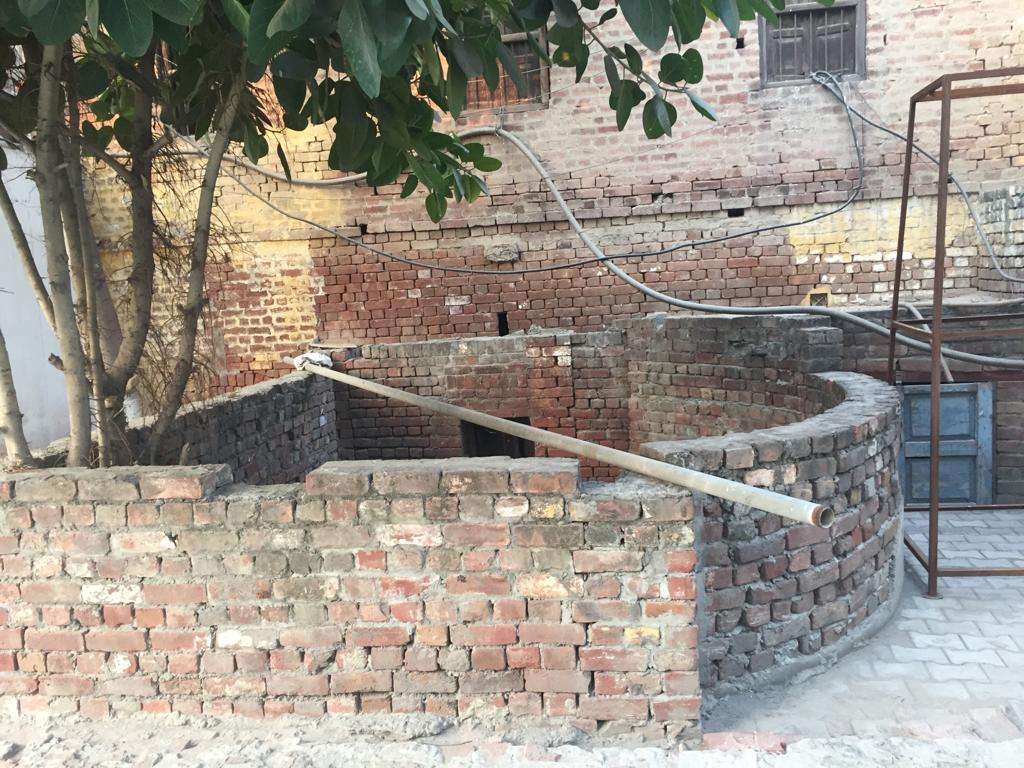
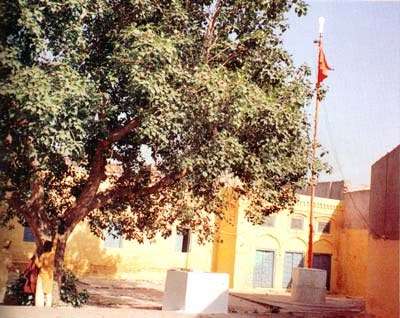
Gurudwara Shaheed Ganj Singh Singhni
This historical site is located opposite Shaheed Ganj of Gurdwara Bhai Taru Singh Shaheed Ganj in Naulakha Bazaar. According to Sikh historians at least 250,000 Sikh men and women were rpartyred at the behest of Mir Mannu, the Governor of Lahore. When Mir Mannu was made the Subedar of Punjab in 1764 he made a vow not to leave a single Sikh alive. At his orders Sikhs’ men and women, were arrested, brought here and then they were murdered. Once there used to be a mosque here and the Muslims used to call it Shaheed Ganj mosque. When Divan Kaura Mal ersuaded the Sikhs to help Mir Mannu at the time of the battle of Multan, he handed over this place to the Sikhs who made it a place of worship. An adage was popular amongst the Sikhs about the oppression of Mir Mannu. ‘Mir Mannu saadi datri, asin mannu dey soye Jyon jyon sano kap da, asin dunay teenay hove. "
Gurdwara Guru Ram Das Ji Janam Asthan Chuna Mandi
Gurdwara Janam Asthan Sri Guru Ram Das is a historical Sikh gurdwara in Pakistan. This is that holy historical place where Guru Ram Das was born on 24th September, 1534 (25 Asuj, Samwat 1591) to Sodhi Hardas Ji and Mata Daya Kaur. The Satguru spent first 7 years of his life here. This place is situated inside Delhi Darwaza, near Purani Kotwali Chowk in Chuni Mandi. The ancestral house of the Guru was small in size, so Maharani Nakain requested to Maharaja Ranjit Singh at the time of birth of Kanwar Kharak Singh, for permission to rebuild this historical place a new. As a result of this, the Maharaja purchased the surrounding buildings from the Qazis and got a Gurdwara of dimensions 122'-6x97'-6 built which was some what similar to the Harimandir Sahib, Amritsar
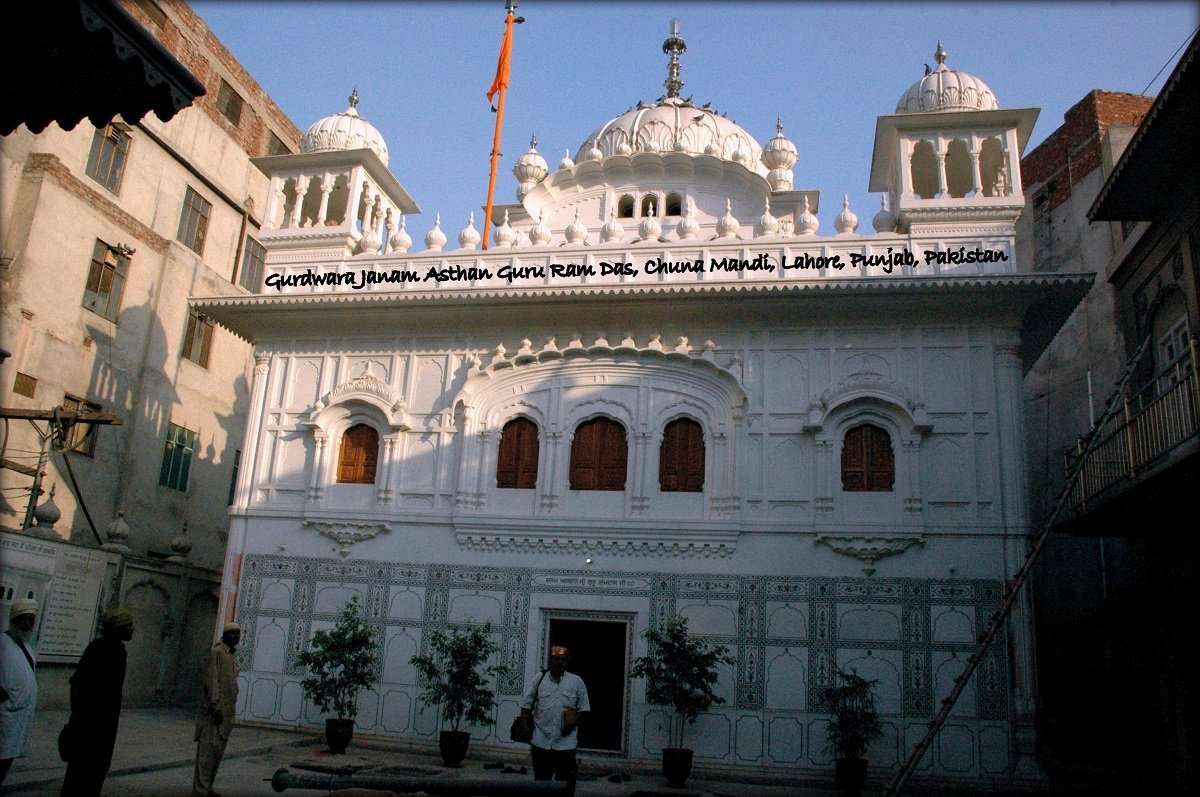
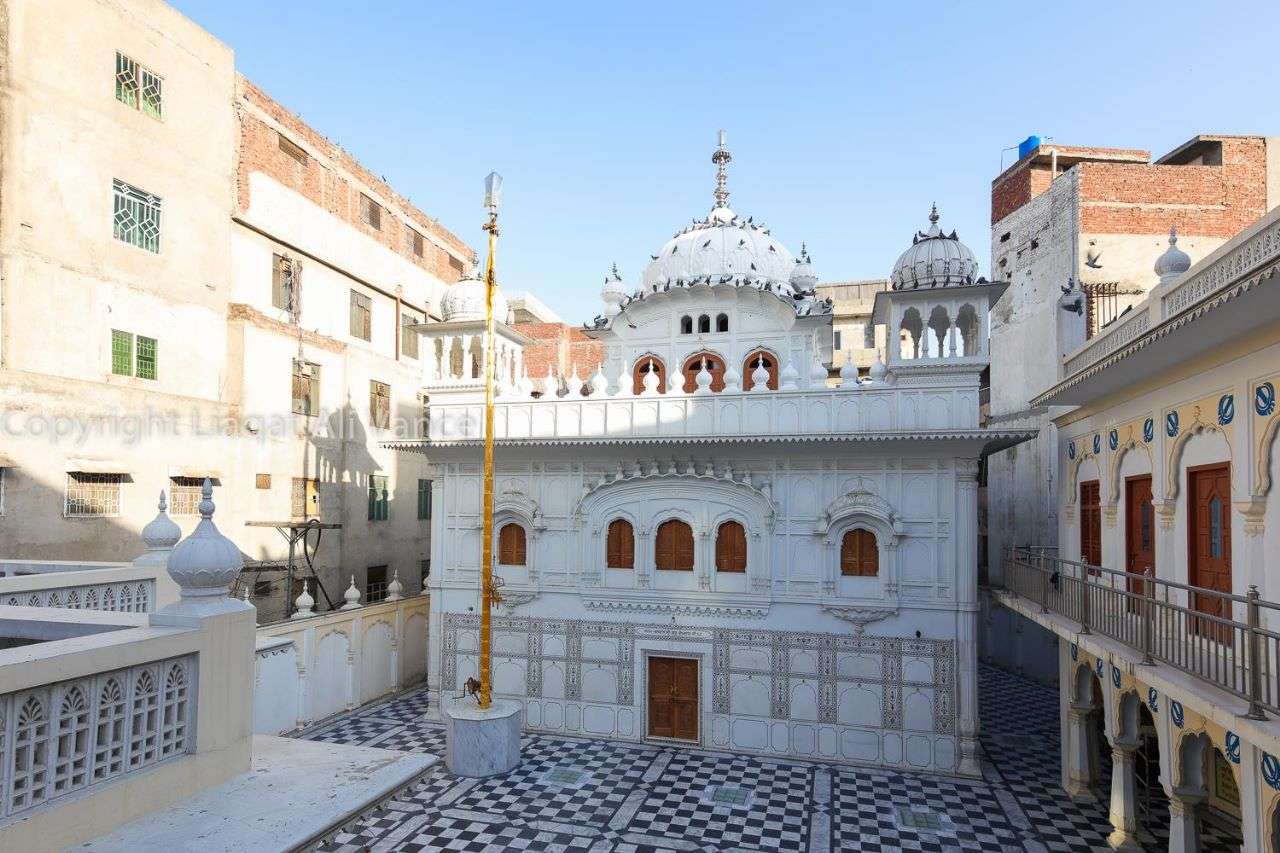
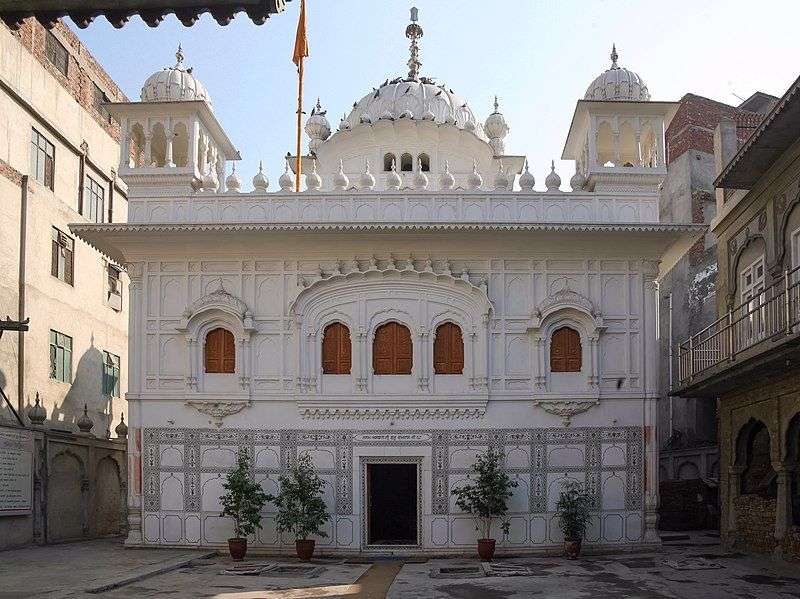
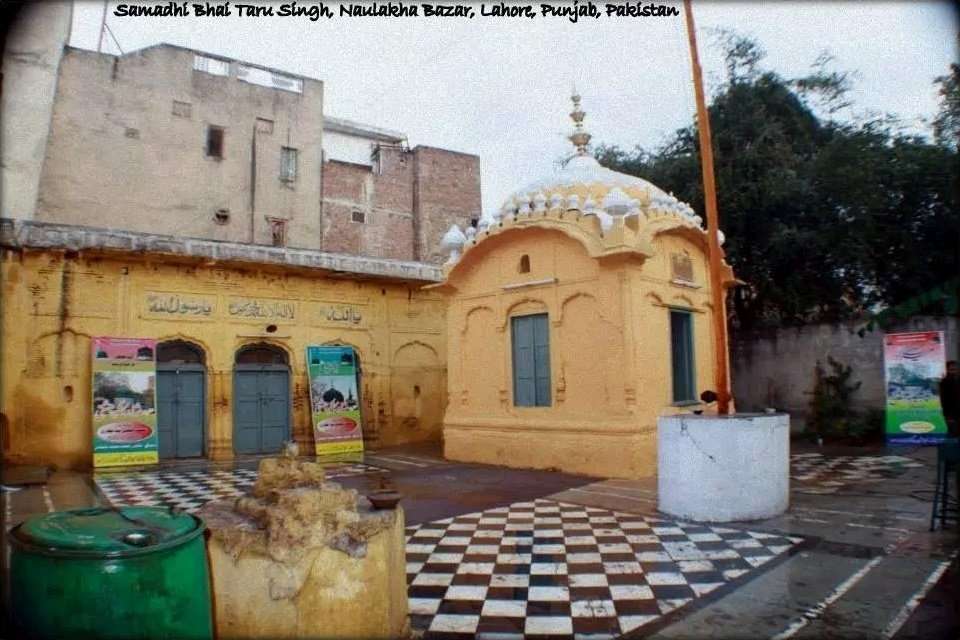
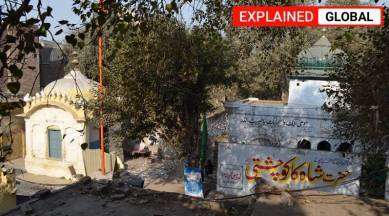

Gurdwara Shaheed Bhai Taru Singh
Gurdwara Sri Shaheed Ganj Bhai Taru of Bhai Taru Singh Ji is situated in Naulakha Bazar, Lahore, Pakistan. Bhai Taru belonged to Polah, a village of District Kasur. Bhai Taru had looked after his widowed mother, and his sister by his sheer honest earnings and helped other needy Sikhs as well. Zakariya Khan, the subedar of Lahore, once asked his men, "From where do the Sikhs obtain their nourishment? I have debarred them from all occupations. They realize no taxes. They do not farm, nor are they allowed to do business or join public employment." "I have stopped all offerings to their gurdwaras, their places of worship. No provisions or supplies are accessible to them. Why do they not die of sheer starvation?"
Gurdwara Sri Shaheed Ganj Singh Singhnian
The Gurdwara gained importance when the Sardars of the Bhangi Misl captured Lahore. Shere-i-Punjab, Maharaja Ranjit Singh would visit this Gurdwara two or three times a week to pay his homage. The Maharaja granted a jagir to this Gurdwara but the management remained with the Mahants. A dispute around this Shaheed Ganj erupted in 1910 AD when fundamentalist muslims tried to take over the possession of Shaheed Ganj. In 1936 AD the dispute became so grave that the police opened fire. The muslims filed a suit and the lower court decided the case in their favour. Later, the Higher Court dismissed the case. Governor Emerson maintained its status as a Gurdwara. The last case was dismissed by the court on 6th may 1996 due to the non appearance of the witnesses and thus it continues to be a Gurdwara even today.
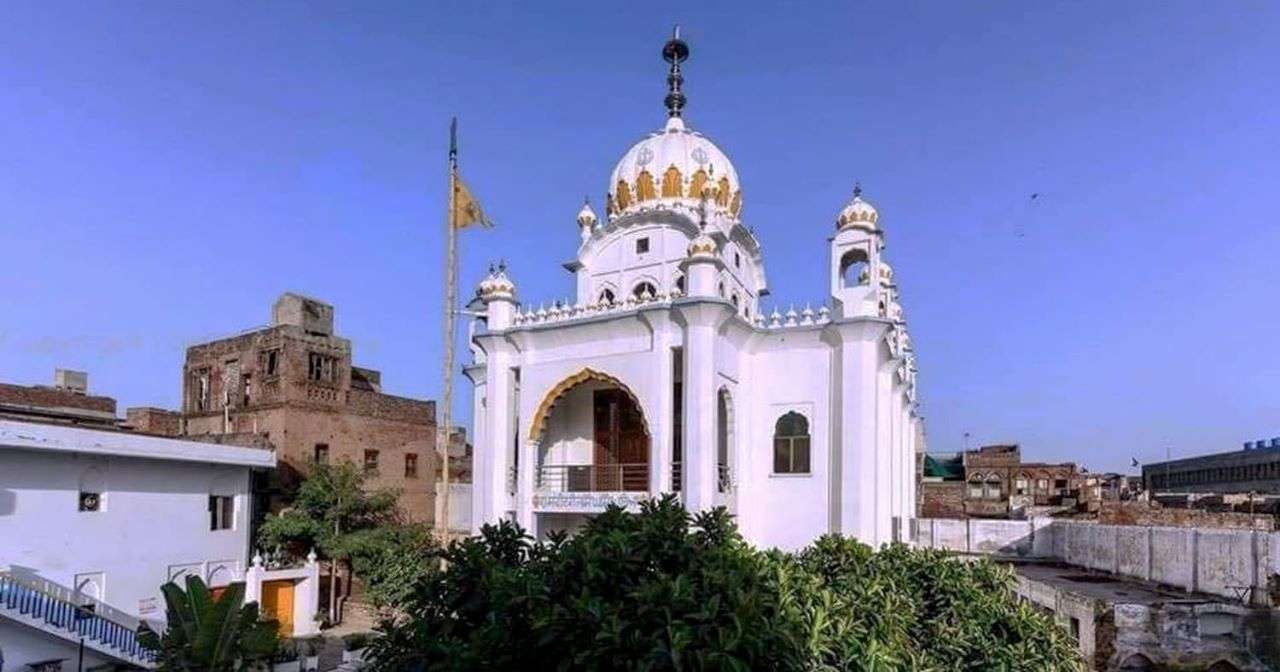
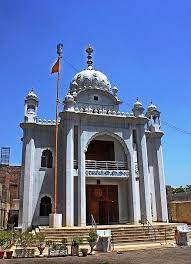


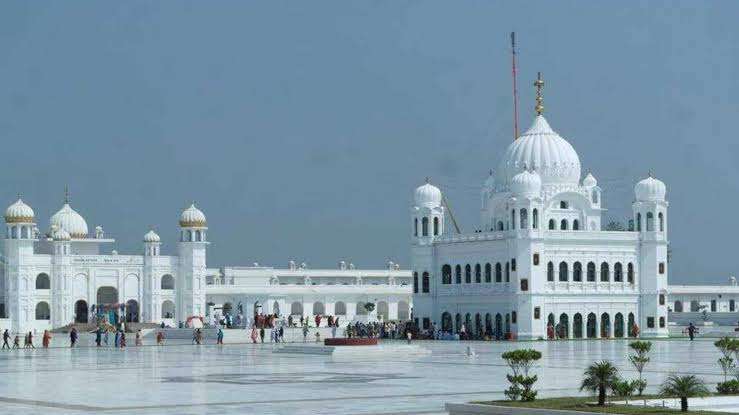
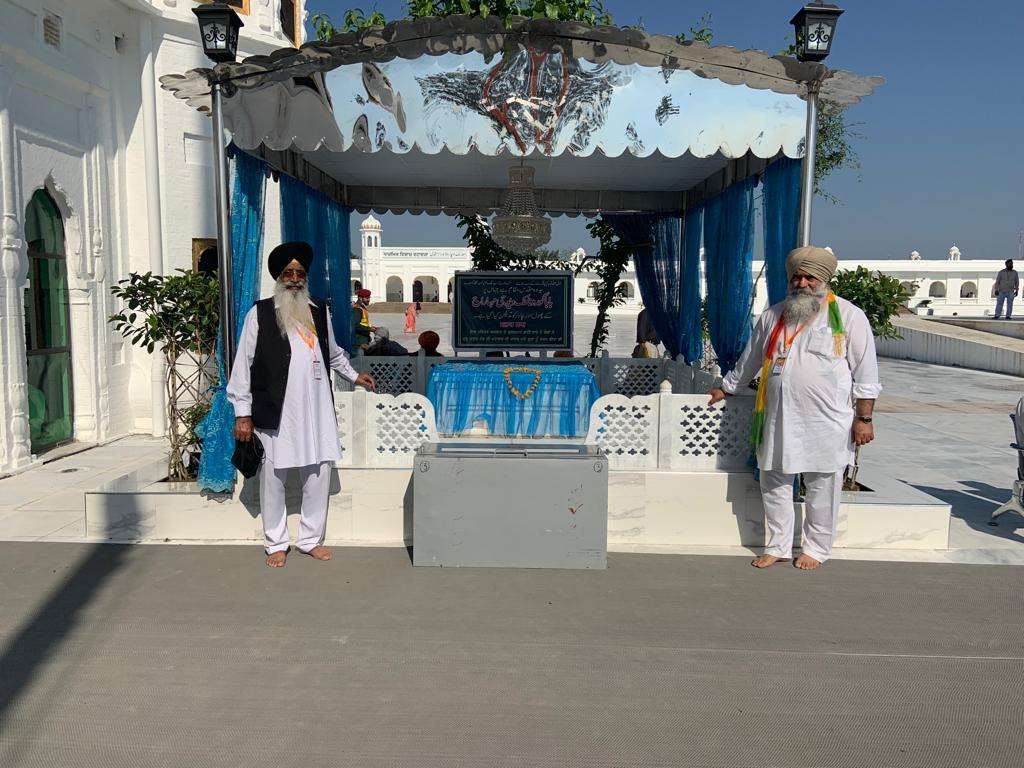

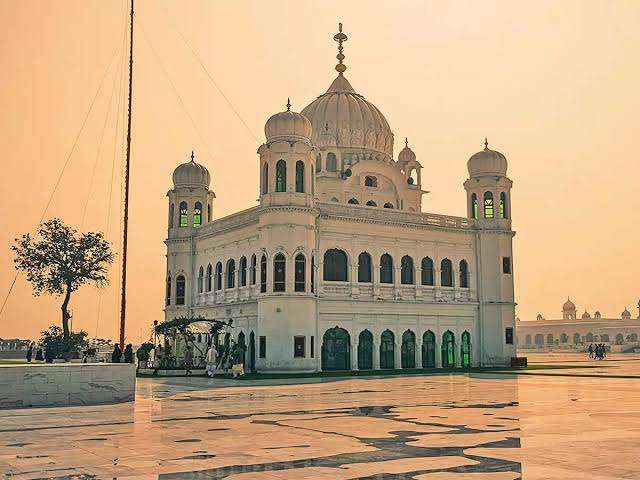
Gurdwara Kartarpur Sahab
The then Governor of the area, Duni Chand met Guru Nanak at Pakhoke and donated 100 acres of land to Guru Sahib. This land is on the right bank of river Ravi. On the Guru’s acceptance of the land he decided to settle there and a small building or hut was constructed. Kartarpur thus became the first Sikh centre. There is a reference in the historical books that Guru formally laid the foundation of Kartarpur on Magh 13, 1572 Bikrmi year [1515AD]. Apart from Duni Chand, Guru’s disciple Doda was also helpful. • The Guru donned the clothes typical of a Punjabi farmer and began to cultivate the land around his new settlement. Soon his family; father, mother, wife and sons arrived at Kartarpur. Here the Guru lived the life of a householder for 18 years. Sikh history is replete with pleasant stories connected with Guru’s pious deeds at Kartarpur where he started the tradition called Guru ka Langer
Gurdwara Bare Sahib Sialkot
Guru Nanak inquired and learnt that someone had failed to keep his promise made to a holy man named Hazrat Hamza Ghaus. Hazrat Hamza Ghaus had flown into a rage and made a vow to meditate for 40 days and at the completion of his meditation the whole city would be doomed. Hearing this Guru Nanak sat down under a Ber tree close to the place where Hazrat Hamza was meditating and loudly sang his Gurbani. It disturbed the maditation of Hamza Ji, who came to Guru Nanak and angrily asked who he was and why he wanted to save the lying villagers. Guru Ji replied "Hamza, you are not supposed to punish a whole city for the misconduct of a single person." Hamza Ji was not satisfied. Guru Ji then explained to him that there were many souls. in the city who understood the purpose of life. Guru Ji gave two paisas to Bhai Mardana to buy "falsehood" and "truth" from the market. Some people ridiculed Mardana Ji but there was a Karar (a hindu) named Maula who took two paisas and wrote two chits. On one chit he wrote, "Life is bitter" while on the other chit he wrote, "Death is truth". Bhai Mardana presented both the chits to Guru Nanak. Guru Ji handed over the two pieces of paper to Hamza Ghaus Ji who after reading the same, pardoned the residents of Sialkot.
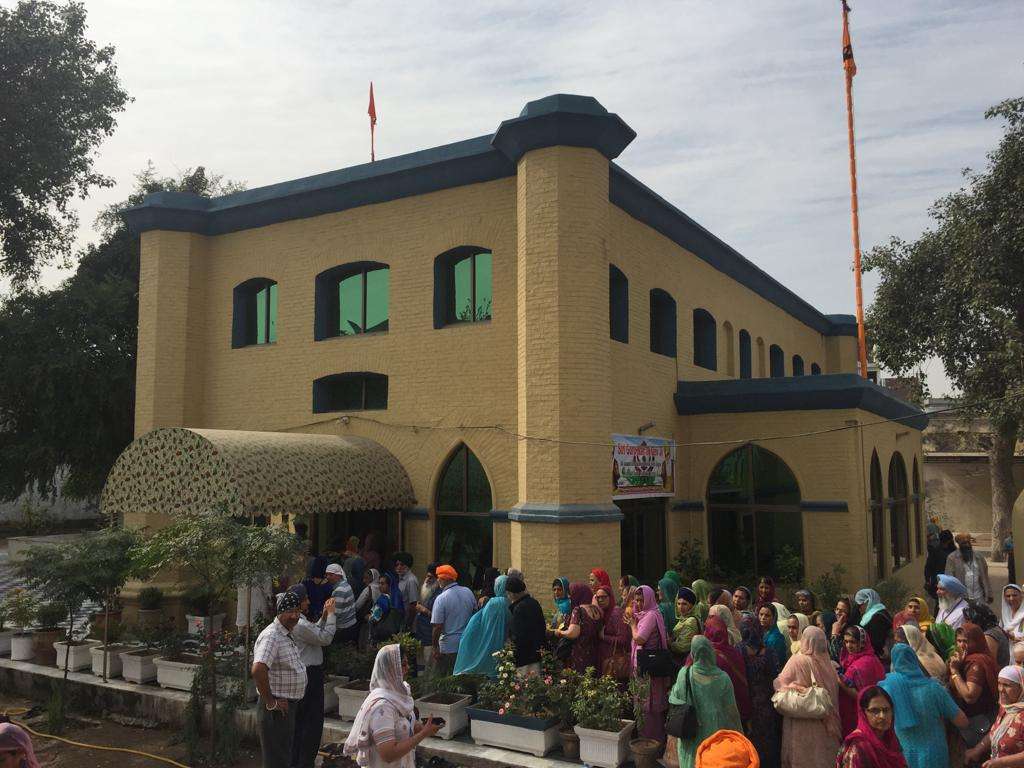

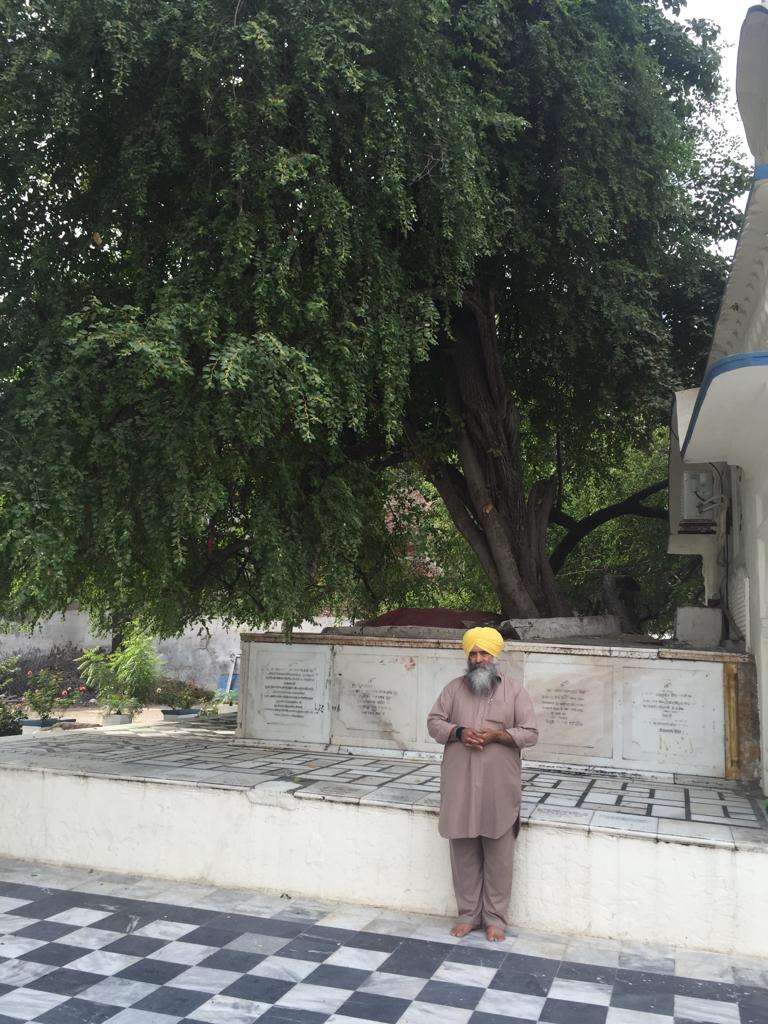
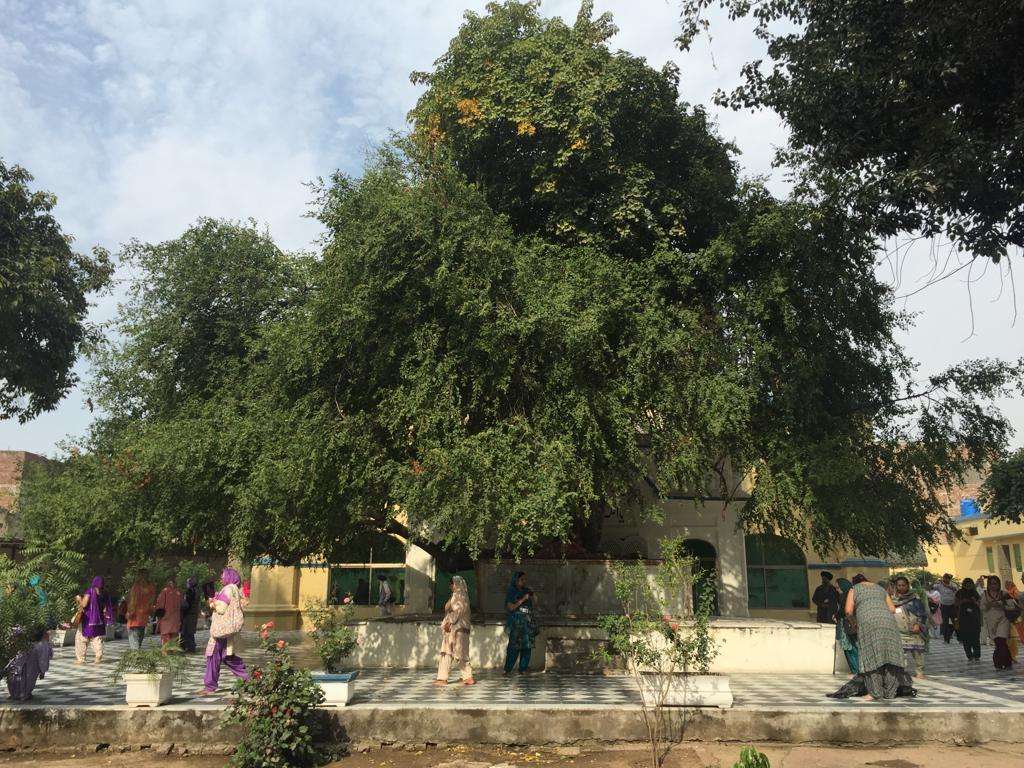
Gurudwara Panja Sahib
Gurdwara Panja Sahib is situated at Hasan Abdal, 48 km from Rawalpindi in Pakistan. This is one of the most holy places of Sikhism because it marks the spot where the founder of the faith, Guru Nanak Dev visited and instilled an important lesson for his adherents. Still visible is the sacred rock with the hand print of Guru Nanak. Many thousands of faithful Sikhs from all over the globe visit this shrine. However, twice a year, during special celebrations, an enormous number of Sikh pilgrims attend this Gurdwara from every corner of the world. Special visas are allocated by the Pakistan government to cater for the increased demand. The word "Panja" in Punjabi means an "outstretched palm" from the word "panj" which means "five".
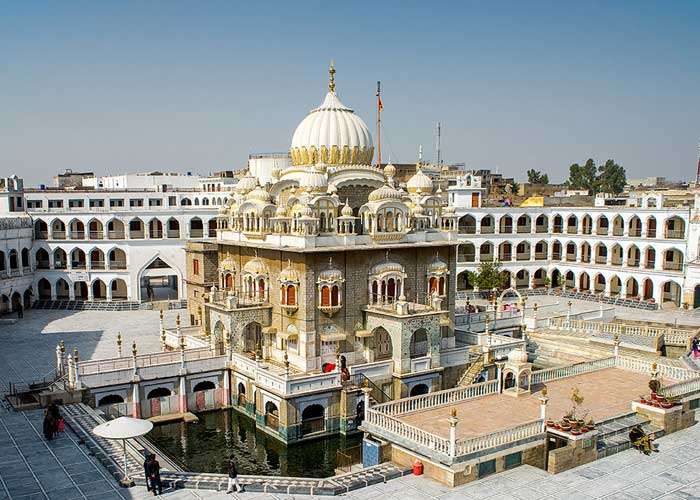

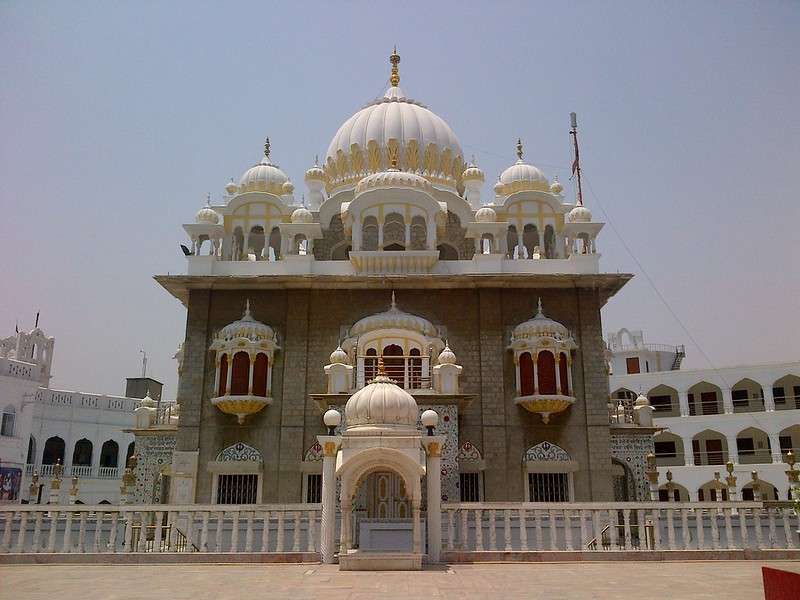

Fariduddin Ganjshakar
There are 134 hymns of Sheik Farid incorporated in the Guru Granth Sahib. Many Sikh scholars ascribe them to Farid Shakarganj (1173 – 1265AD or 569-664 AH) of Pak Pattan, a disciple of the Sufi Qutbuddin Bakhtiyar Kaki. The tenth in succession to his post was Sheikh Brahm (Ibrahim), also known as "Farid Sani" or "Farid the 2nd", and it is this Farid who Guru Nanak Dev met on two occasions. Max Arthur Macauliffe who has been described as a 'Matchless Scholar of Sikh Lore' states that hymns ascribed to Farid are compositions by the latter Farid, whereas others have ascribed them to Farid Shakarganj. There are still other scholars who believe that the hymns were composed by different Sufis of the Pak Pattan centre, all using the poetic name Farid because the custom in those days was to choose the leader’s most suitable devotee to take his place shortly before his death
